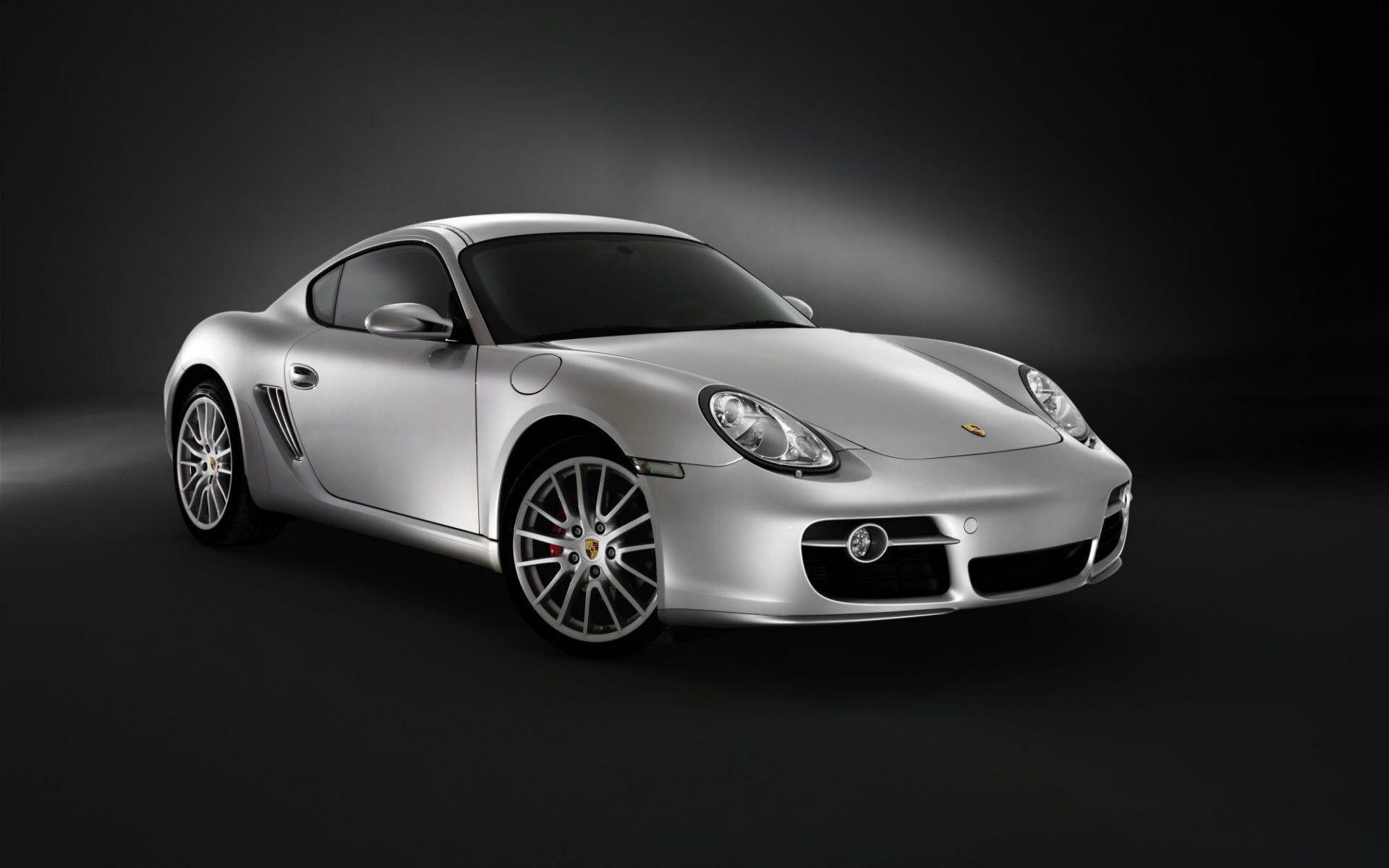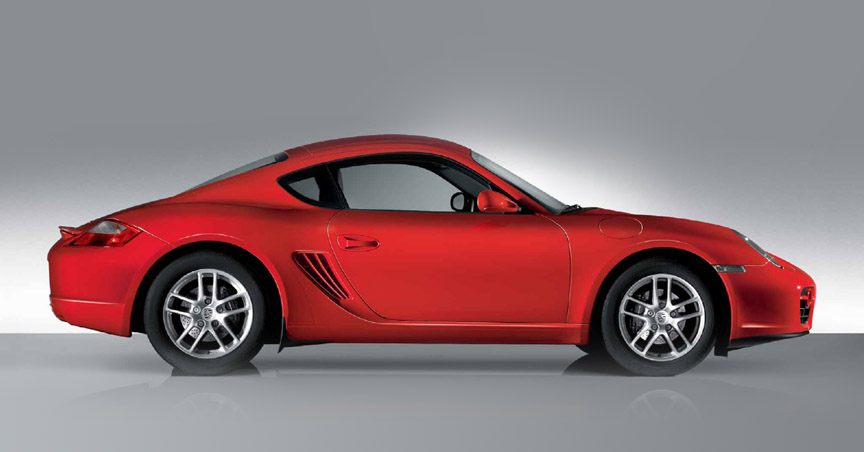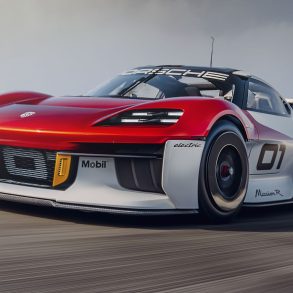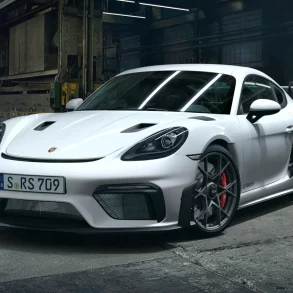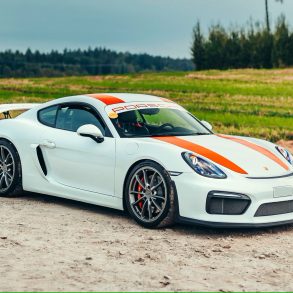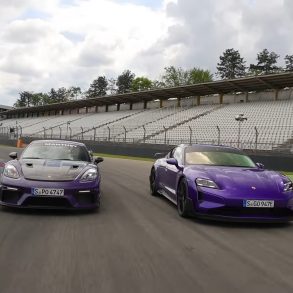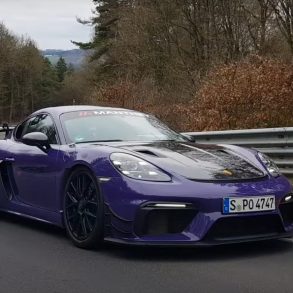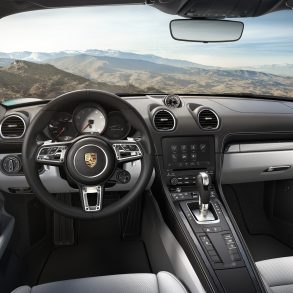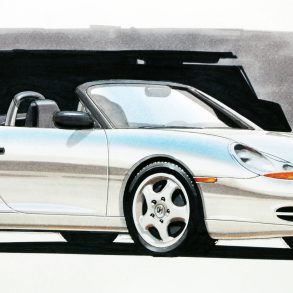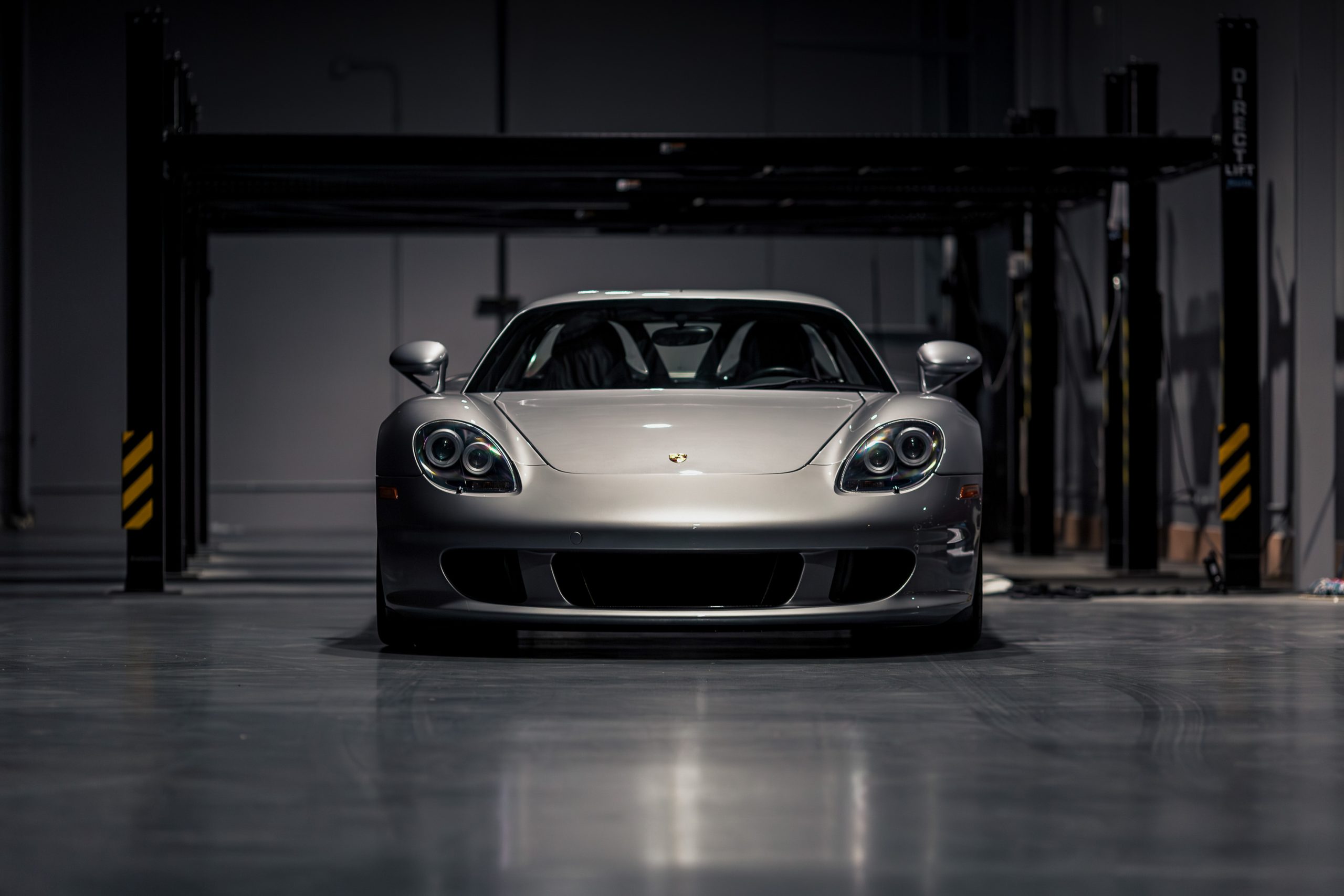2nd Generation Porsche Cayman (987) Story & History
IMPORTANT NOTE: The 987 was actually the first generation of Cayman. We are referring to it as the second generation on this site because it is the second generation of the Boxster platform. The Cayman and Boxster platforms have been the same since the Cayman was launched, which is why we kept them aligned in terms of generation (to make things easier and cleaner).
Cayman 987.1 (2005 – 2008)
Official photos: 2005 May 23 / Premiere: 2005 September 14, IAA Frankfurt motor show press day / Market launch: 2005 November 26
Technical Specifications 987.1 Cayman
| Modification | Engine | Power | Torque | Gearbox | 60 mph | 100 km/h | 100 mph | 200 km/h | 1 km | Top speed | DIN weight |
|---|---|---|---|---|---|---|---|---|---|---|---|
| Cayman | 2.7B6 | 180 kW | 201 lb-ft / 273 Nm | Tiptronic 5-speed | 6.7 sec. | 7.0 sec. | 16.4 sec. | 27.3 sec. | 27.0 sec. | 157 mph 253 km/h | 1360 kg 2998 lb |
| Cayman | 2.7B6 | 180 kW | 201 lb-ft / 273 Nm | manual 5-speed | 5.8 sec. | 6.1 sec. | 14.2 sec. | 23.7 sec. | 26.0 sec. | 160 mph 258 km/h | 1300 kg 2866 lb |
| Cayman | 2.7B6 | 180 kW | 201 lb-ft / 273 Nm | manual 6-speed | 5.8 sec. | 6.1 sec. | 14.0 sec. | 23.2 sec. | 25.8 sec. | 162 mph 260 km/h | |
| Cayman S | 3.4B6 | 217 kW | 250 lb-ft / 340 Nm | Tiptronic 5-speed | 5.8 sec. | 6.1 sec. | 13.5 sec. | 21.6 sec. | 25.4 sec. | 166 mph 267 km/h | 1390 kg 3064 lb |
| Cayman S | 3.4B6 | 217 kW | 250 lb-ft / 340 Nm | manual 6-speed | 5.1 sec. | 5.4 sec. | 11.7 sec. | 18.6 sec. | 24.3 sec. | 171 mph 275 km/h | 1340 kg 2955 lb |
Caiman is a small and nimble crocodile. Cayman is a small and nimble Porsche. With the Boxster 987 as the base, it was a rare occasion in the world of car construction that a coupé was built on the platform of an open car. The plus was the more rigid chassis, the minus the weight not saved. Another strange thing: the fixed roof coupé was more expensive than the roadster with its electrically folding top. The price increase from Boxster to Cayman was 8-10%.
AutoWeek’s editors named the Porsche Cayman S the best car at the 2005 Frankfurt motor show. Autocar magazine called it “brilliant” and “Porsche´s most focused sports car”. At the New York International Auto Show, the Cayman S was awarded World Performance Car of 2006. In the eyes of the 46-strong jury the Cayman S impressed with its “perfect combination of outstanding handling, looks and performance.”
The cars were built at the Valmet factory in Uusikaupunki, Finland. The incoming car parts were shipped from Rostock in Germany to Uusikaupunki 3 times a week and the majority of the built-up vehicles were shipped back to Germany, this time to Emden port.
The 2.7-litre base version was made available later, from August 2006 as a 2007 model. Its manual transmission had just 5 speeds. The base price on the Cayman 2.7 was a whopping 19% lower than on the 3.4-litre S-version, but standard equipment was really non-existent. That might be a good thing with a sports car, but if you want it for sports, you need the S-version. Even the 6-speed transmission was optional for the base Cayman. For comparison, the entry level Porsche 968 had the 6-speed transmission as standard already in 1991. And no less than a 3-litre engine. 15 years earlier.
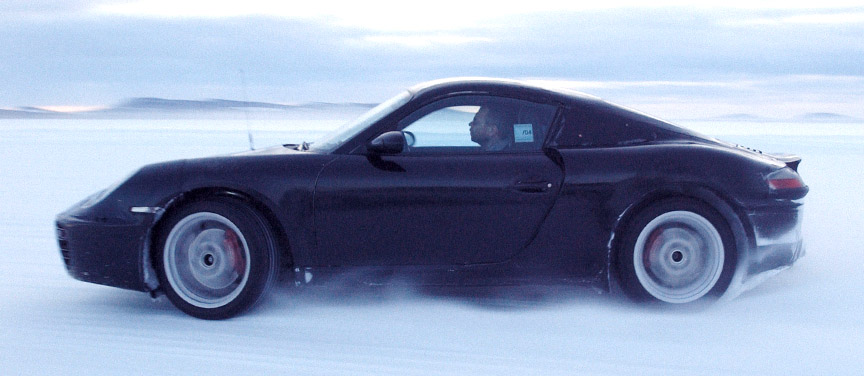
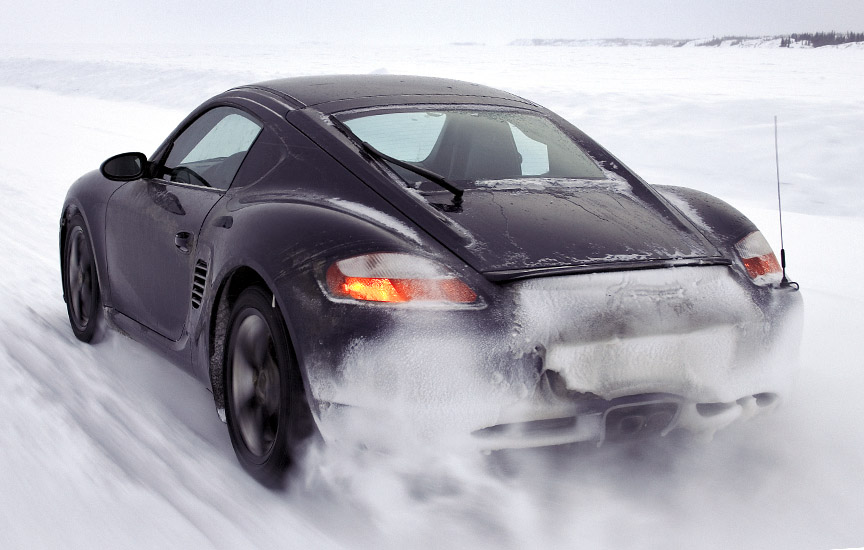
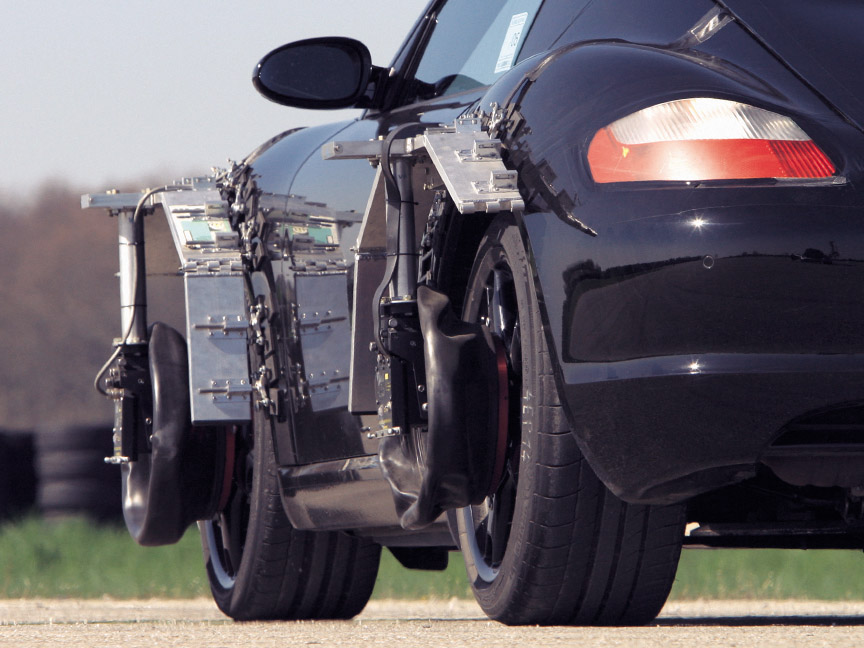
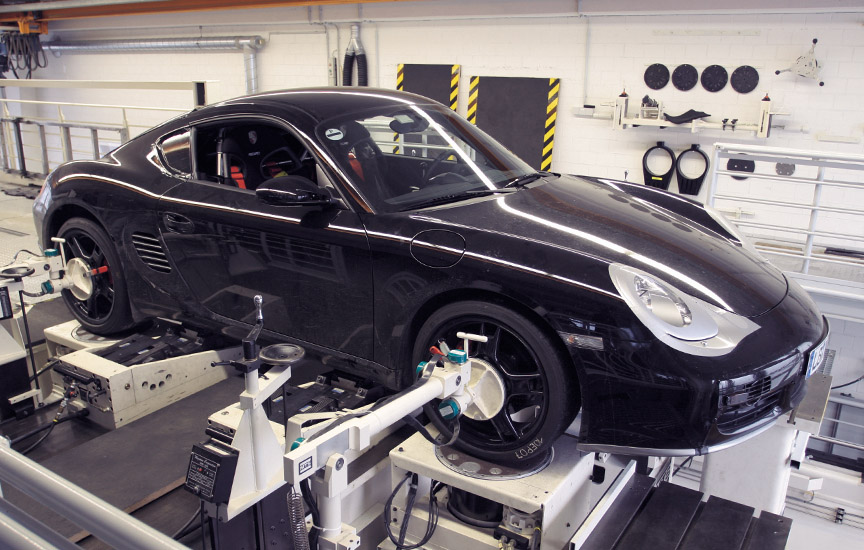
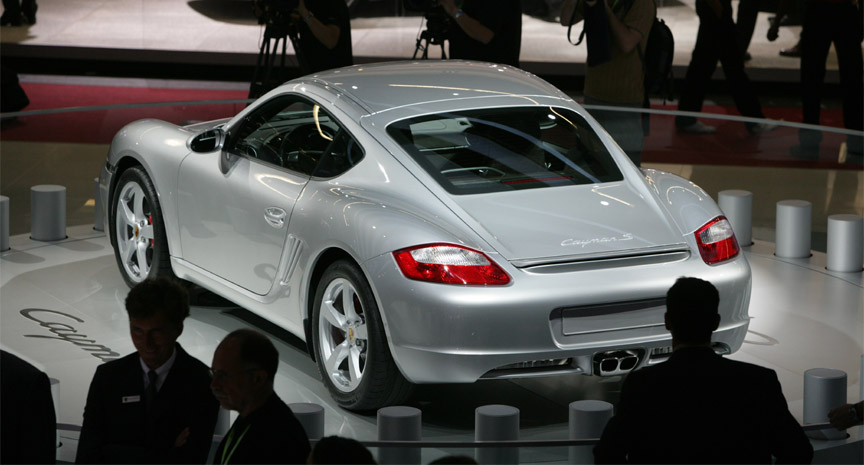
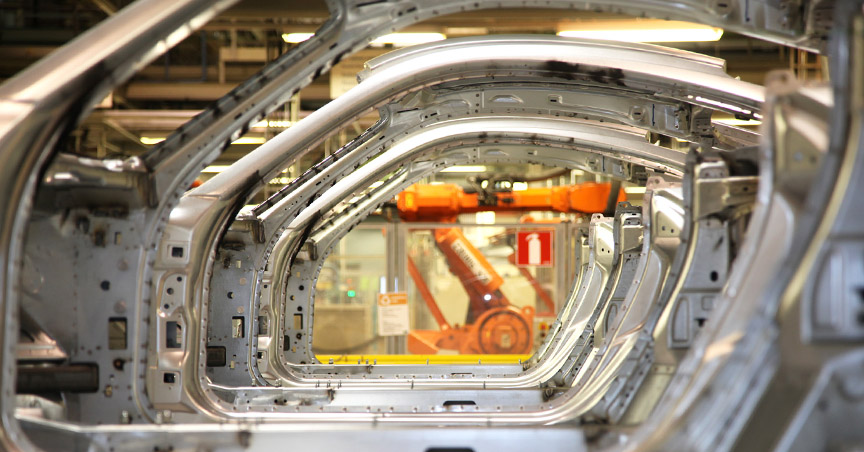
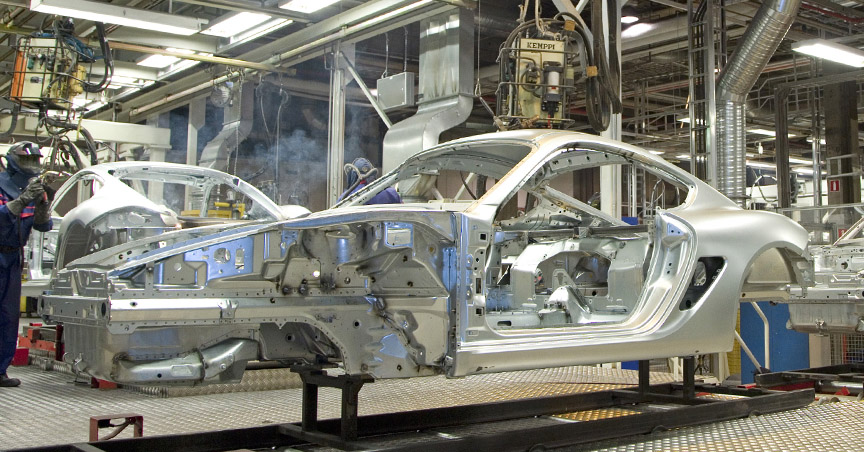
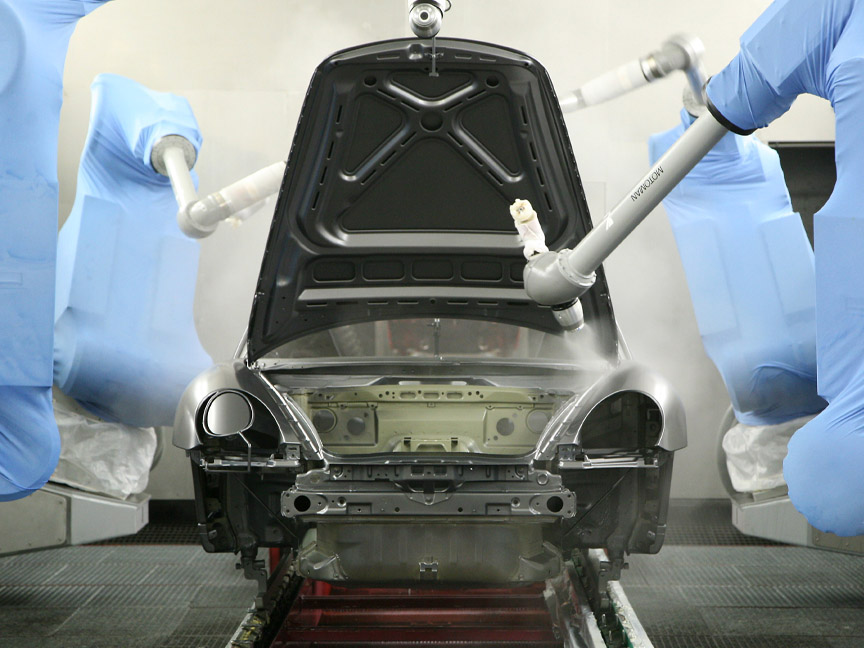
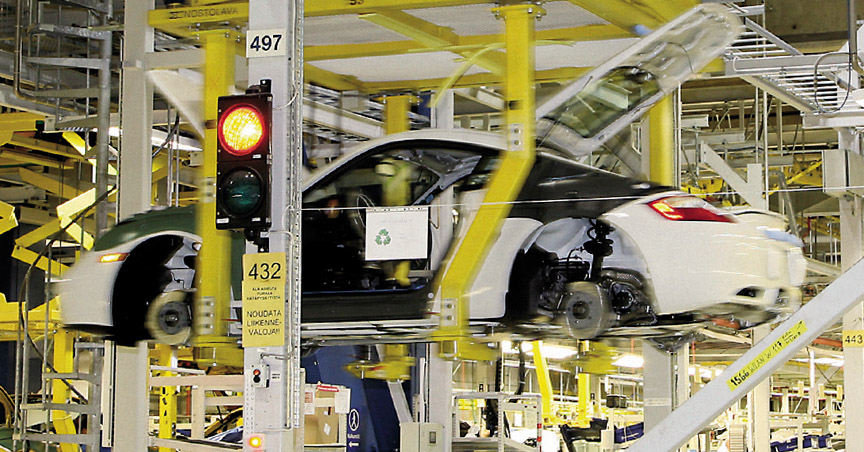
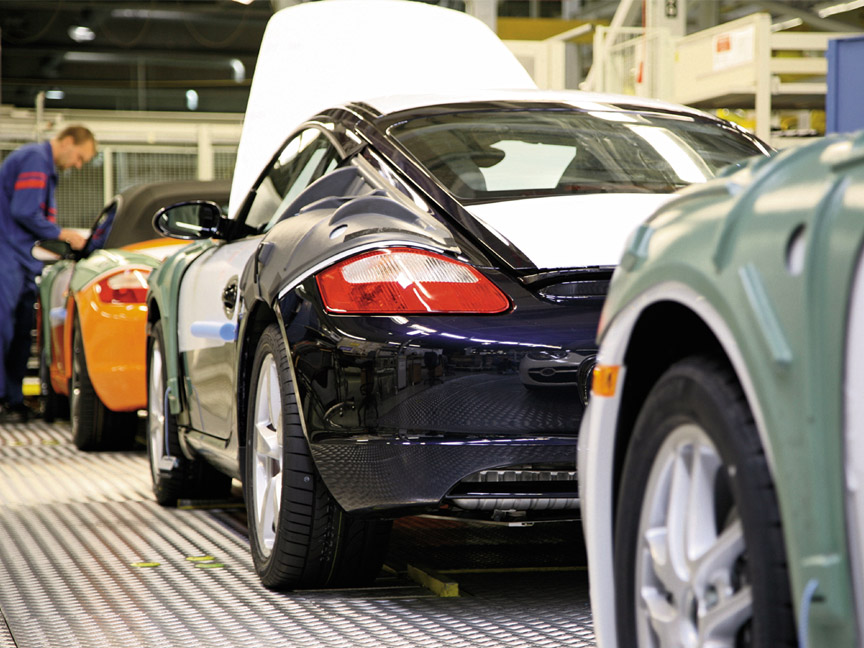
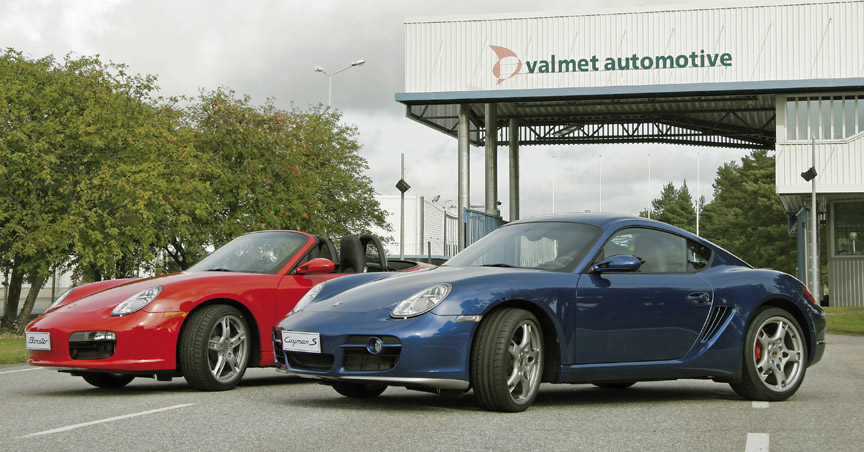
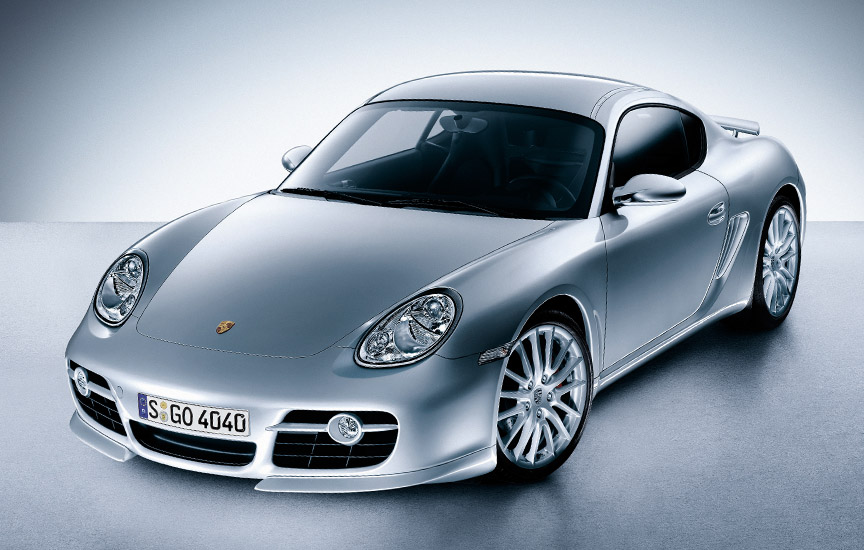

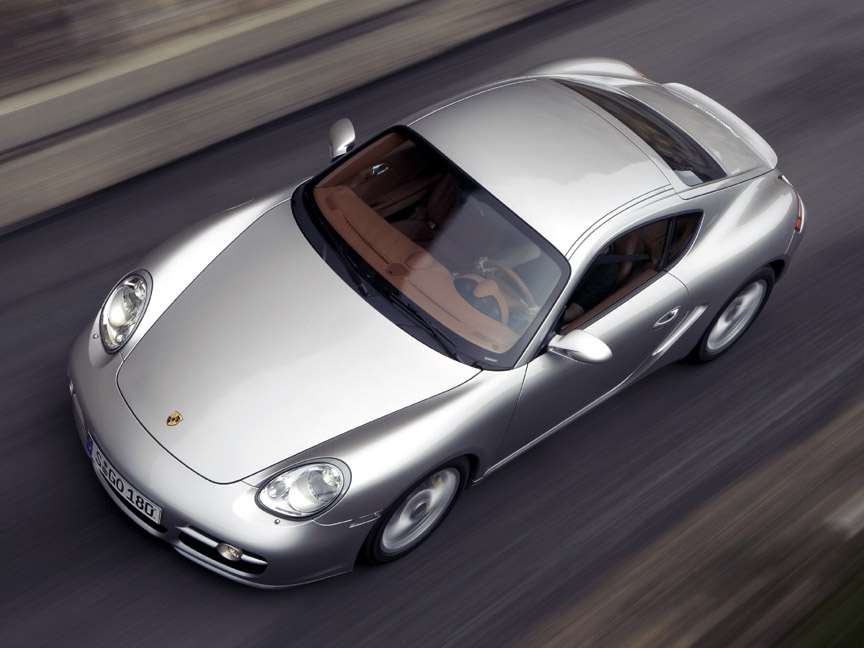

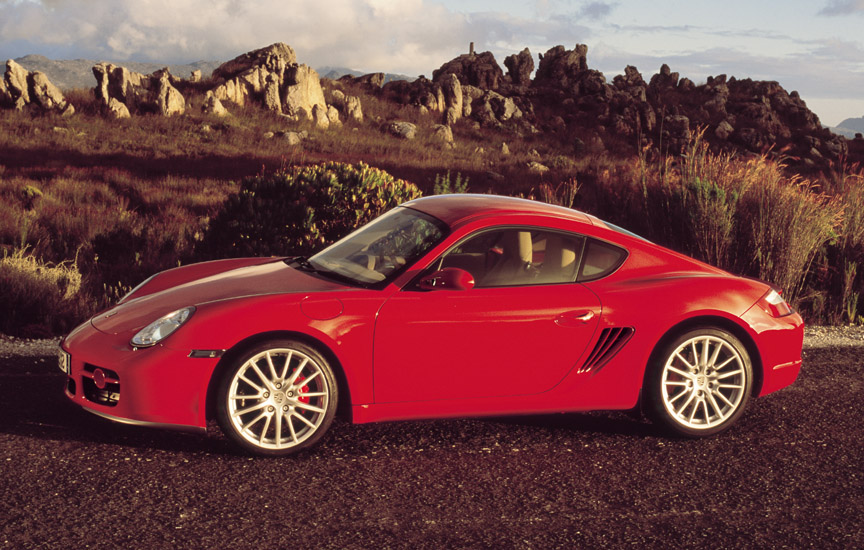
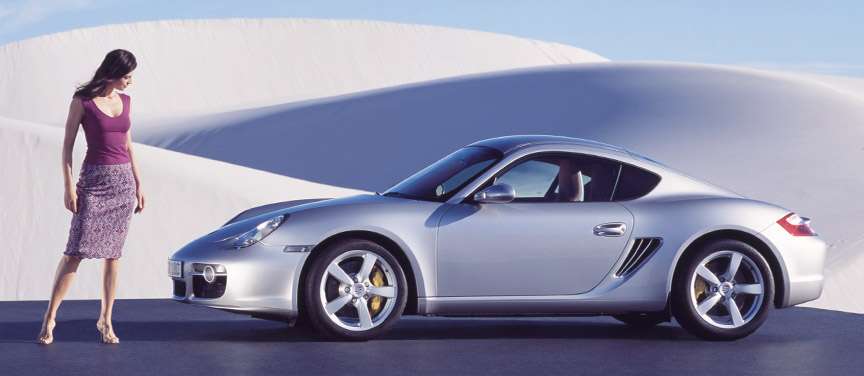
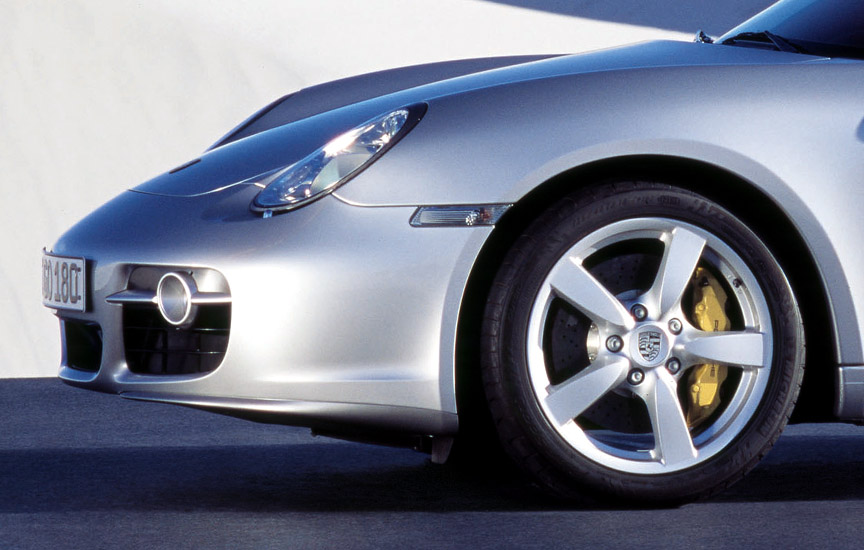
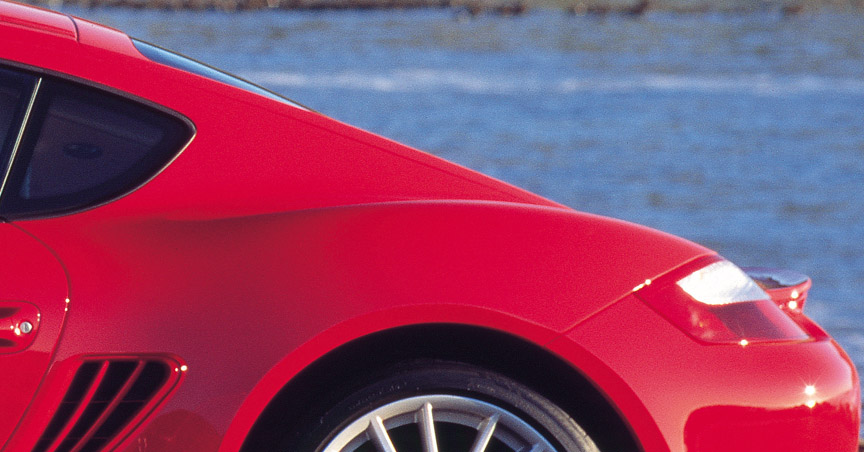
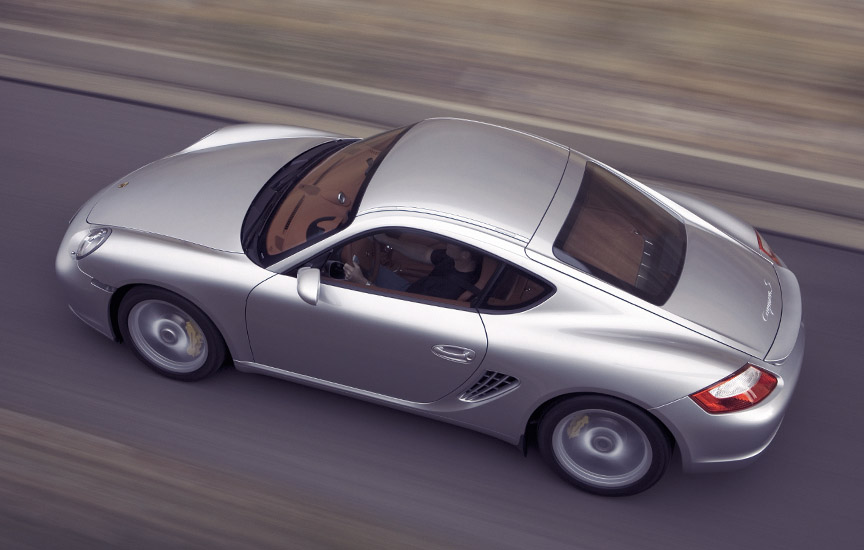
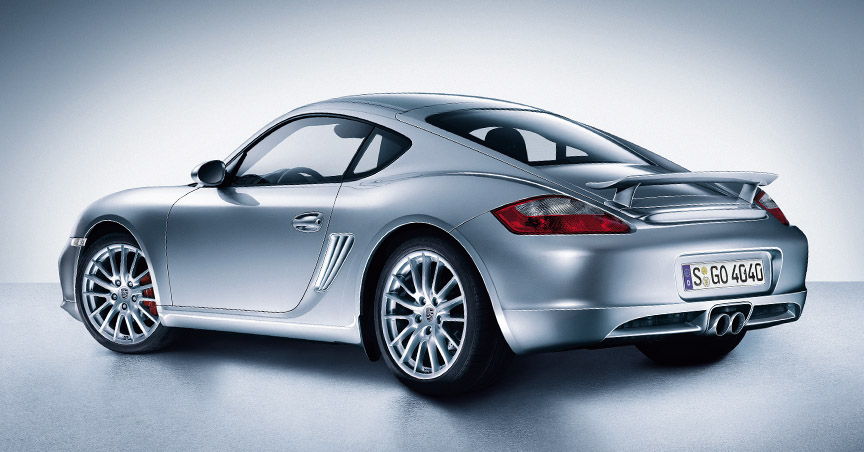
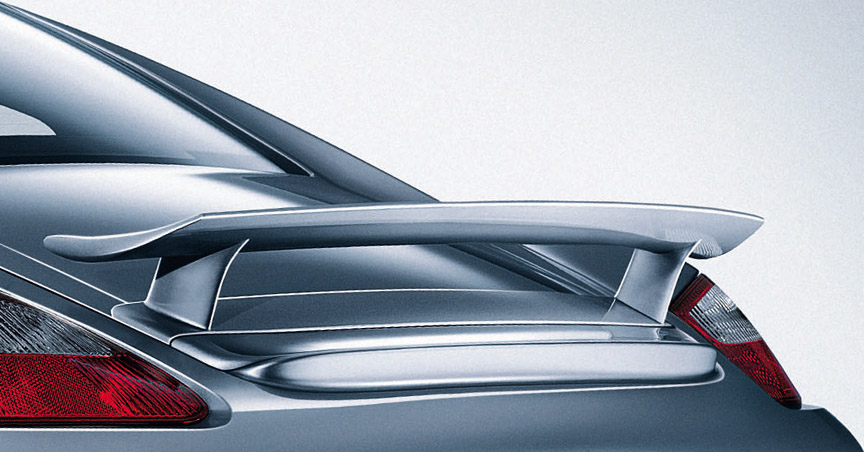
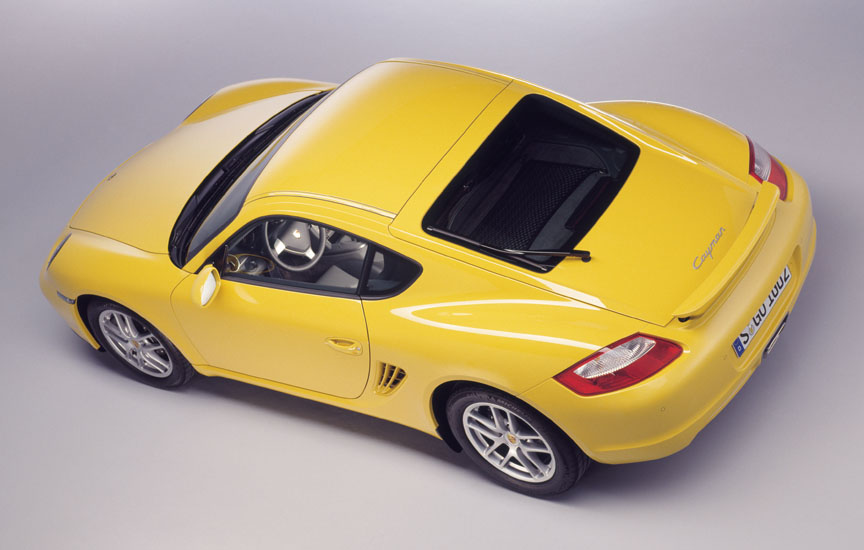
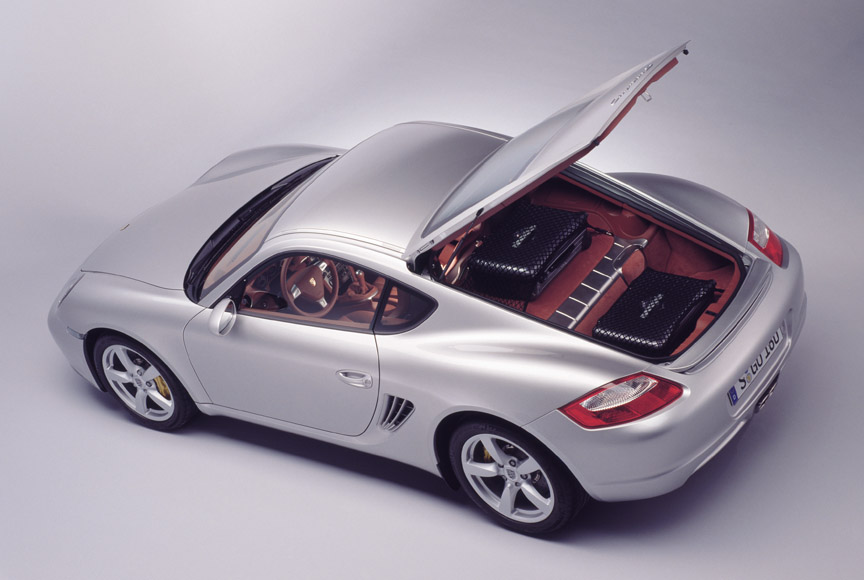
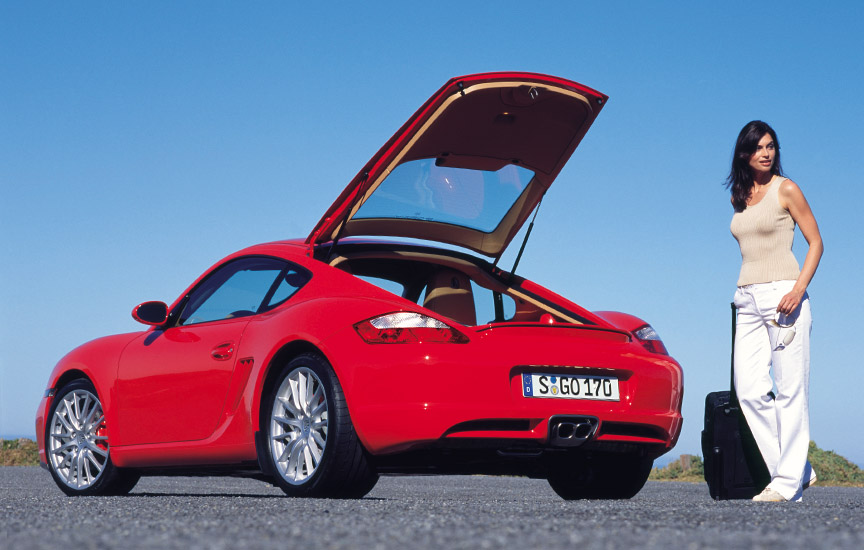

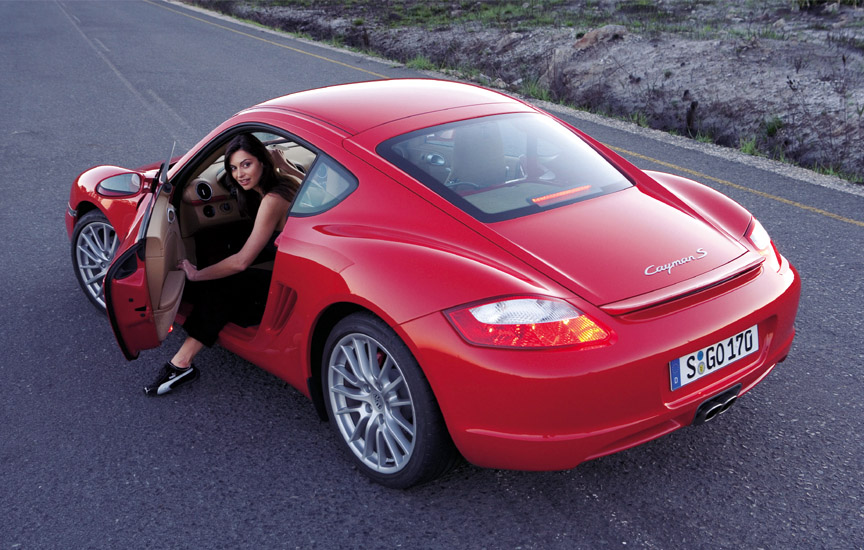


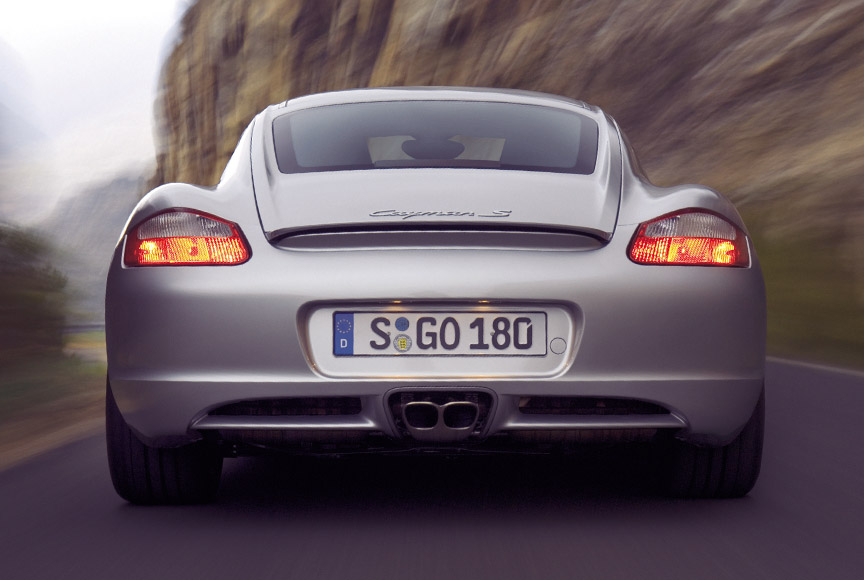
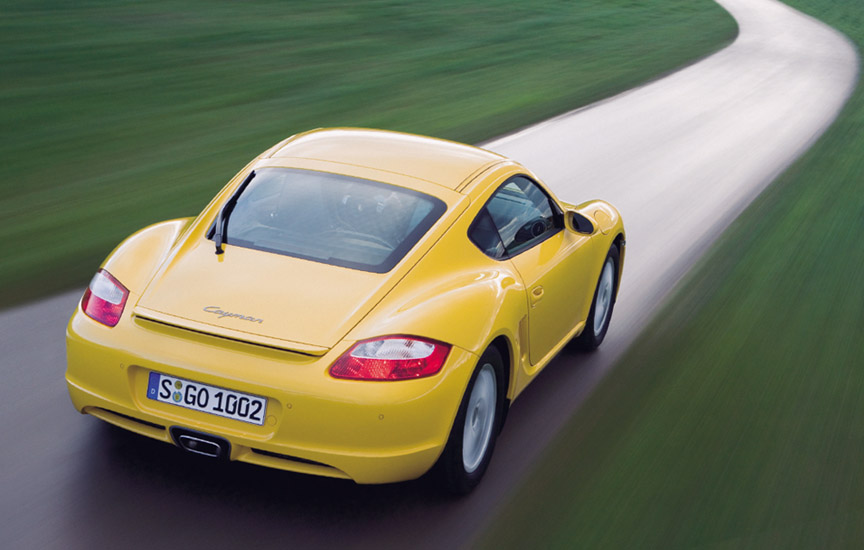
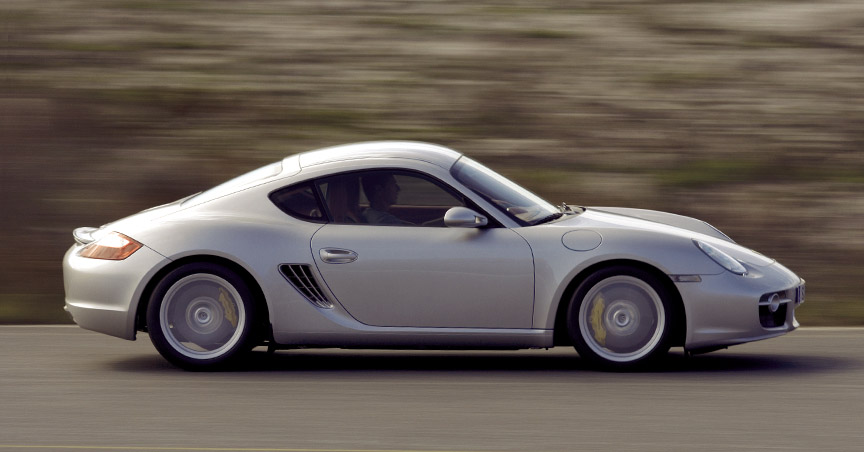
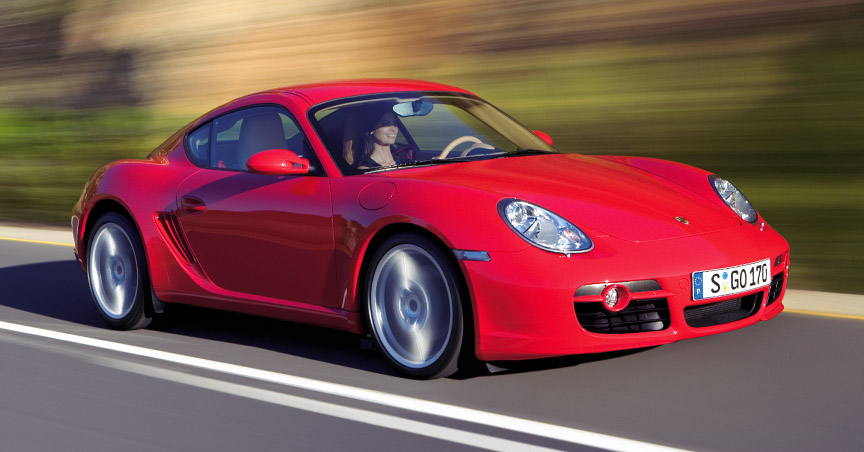

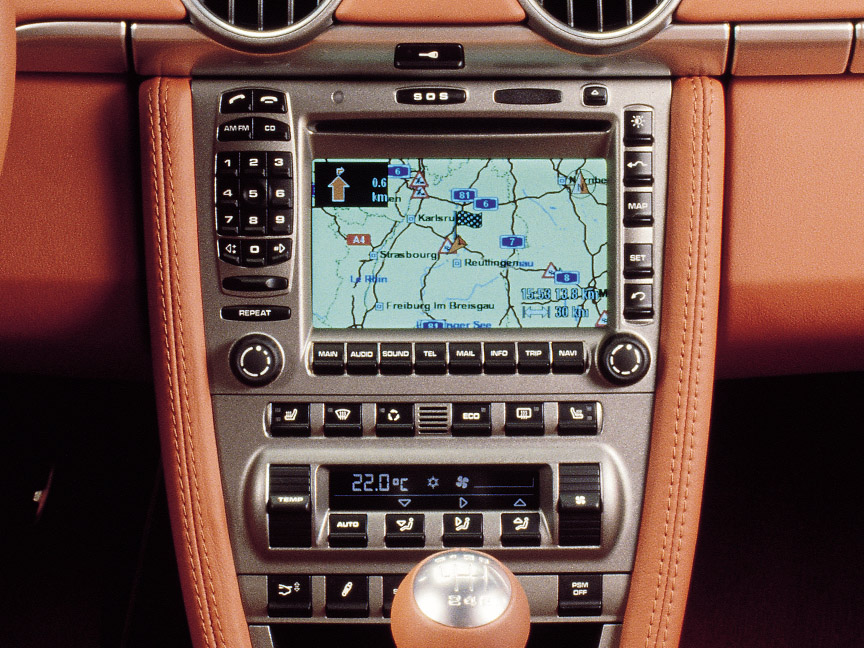
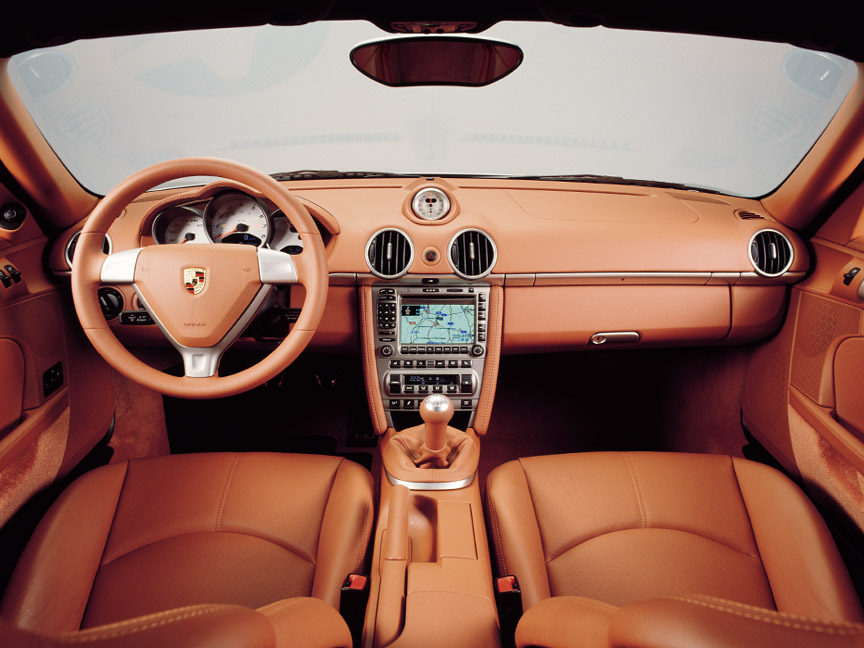
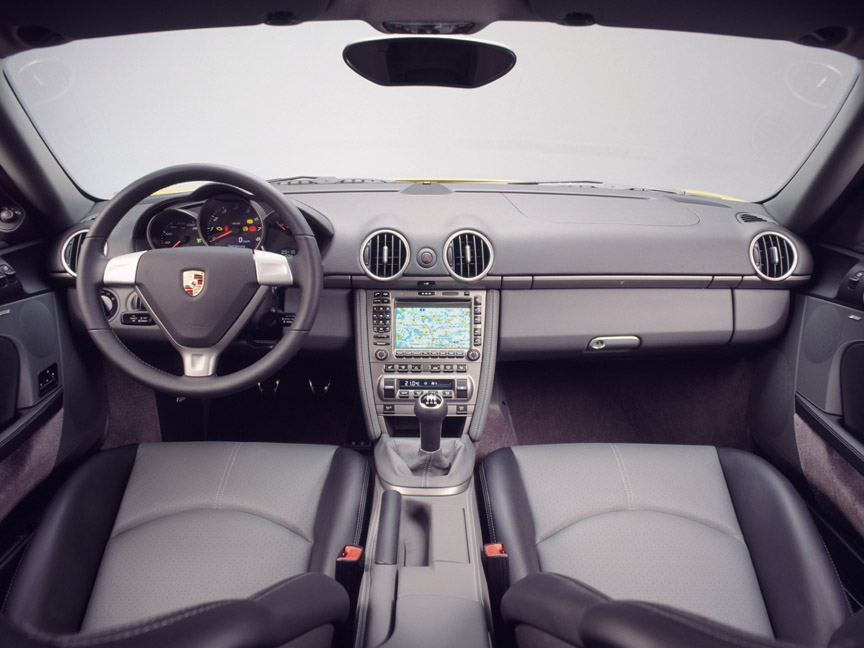
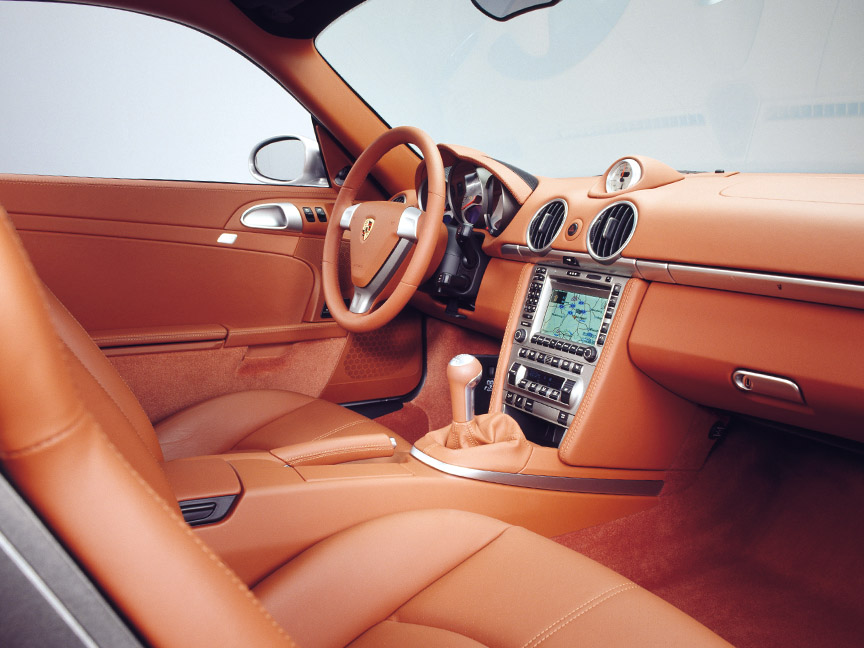
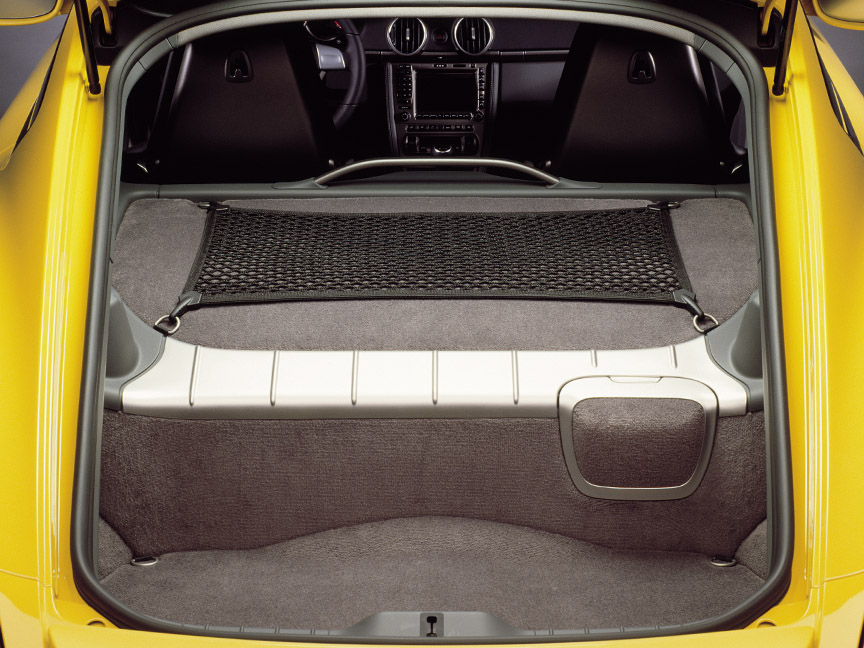
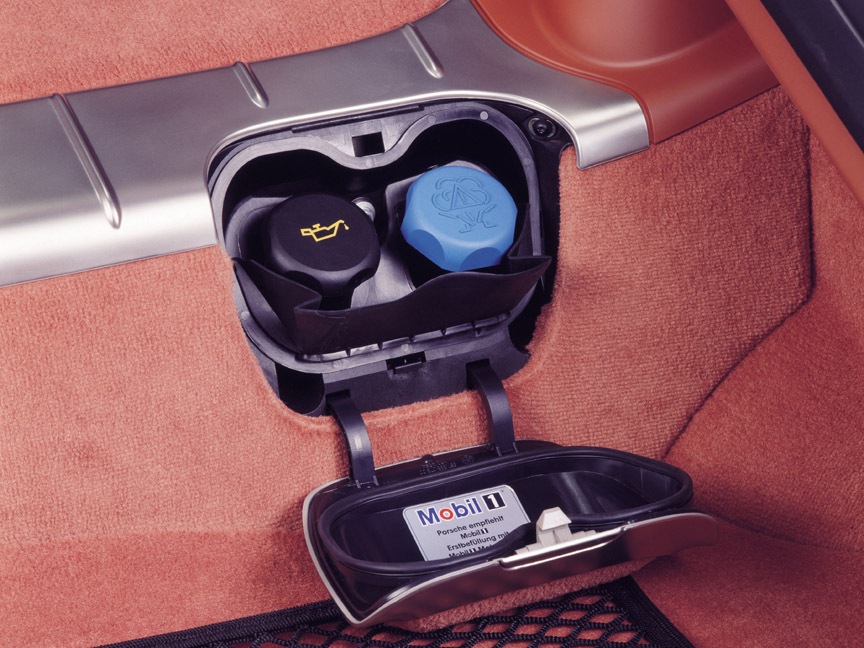
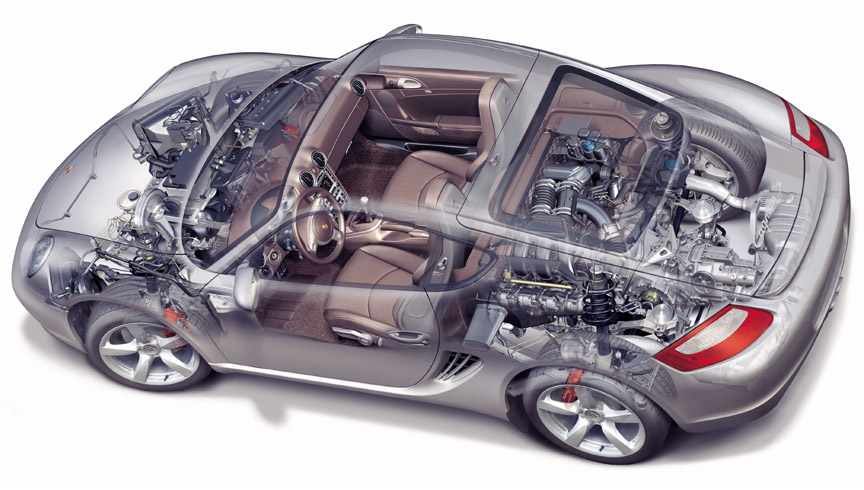
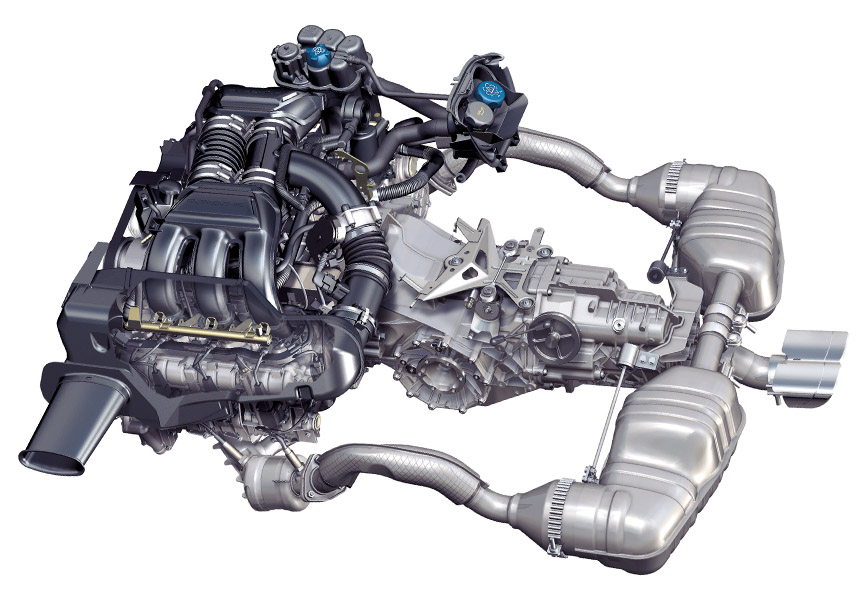
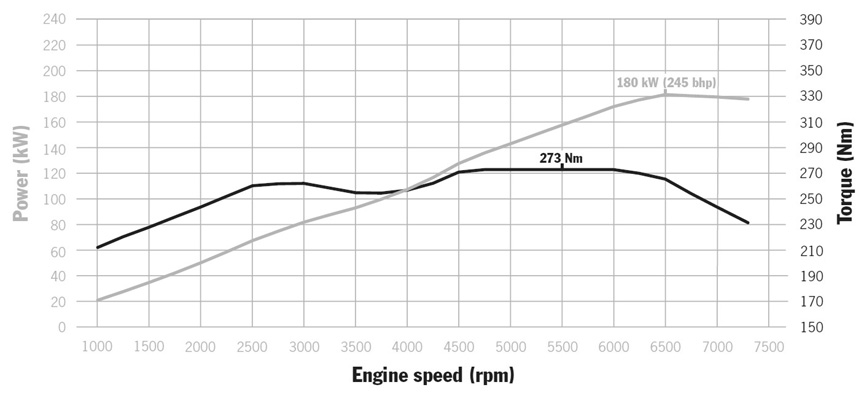
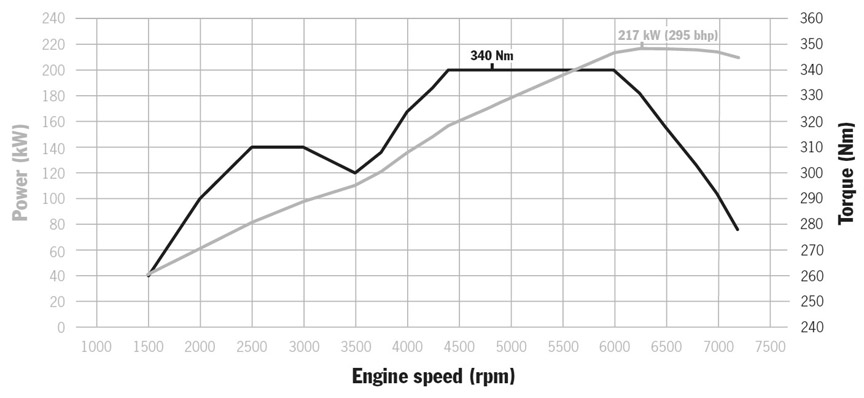


Brakes
| Color of callipers | Front disc diameter | Rear disc diameter | |
| Cayman | Black | 298 mm | 299 mm |
| Cayman S | Red | 318 mm | 299 mm |
| PCCB ceramic | Yellow | 350 mm | 350 mm |
Cayman S Porsche Design Edition 1
To boost the sales, a black on black Cayman S called Porsche Design Edition 1 was launched in the end of 2007. The car came with a briefcase containing Porsche Design items like the chronograph, a pocket knife, sunglasses, a pen, and a key ring. It should be mentioned, that Porsche Design is an Austrian company established by the designer of the 911, F. A. Porsche. Ferdinand Alexander was the son of Ferdinand Anton Ernst “Ferry” Porsche who created the Porsche marque and the grandson of engineer Ferdinand Porsche.
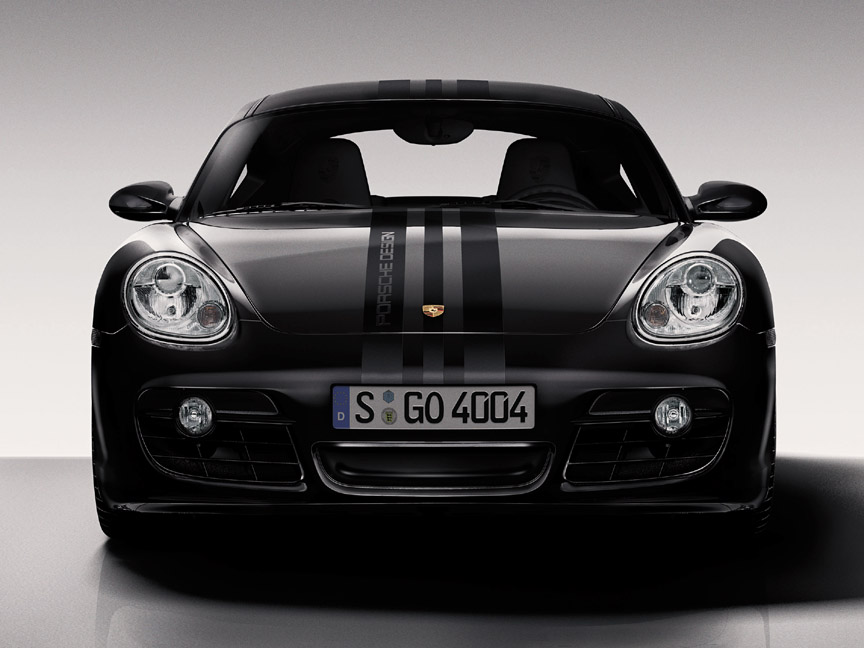
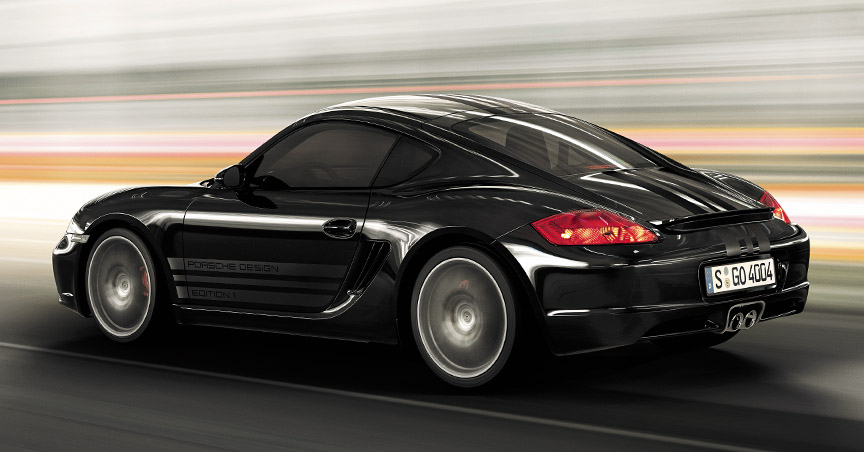
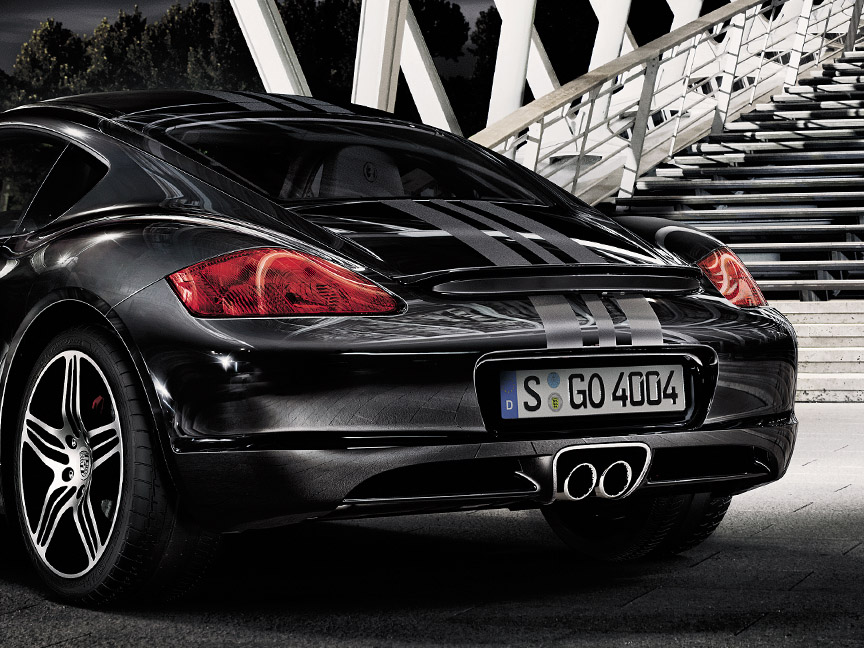
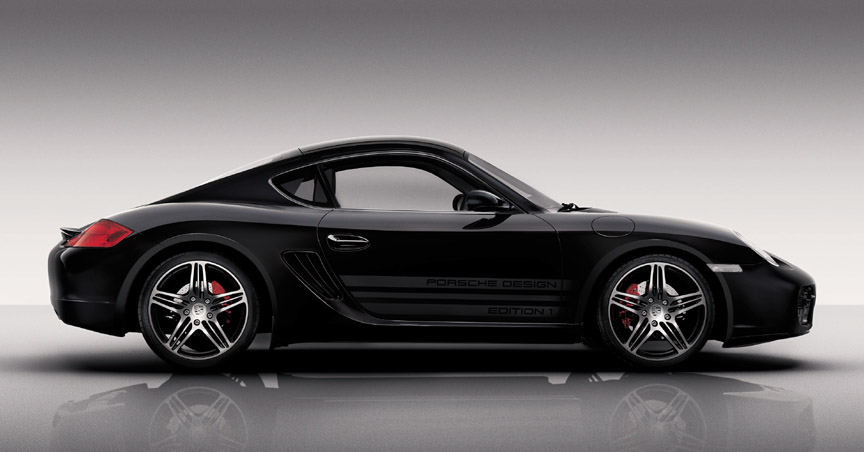
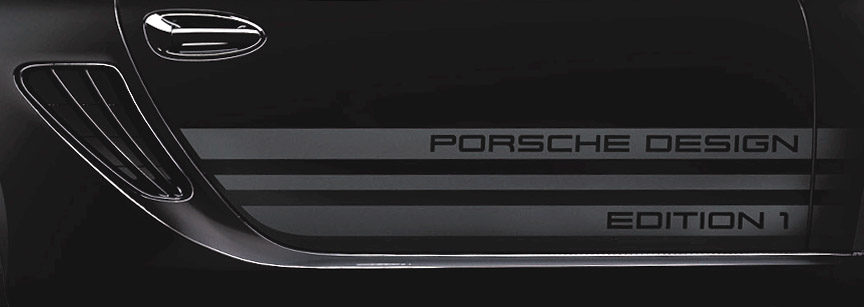
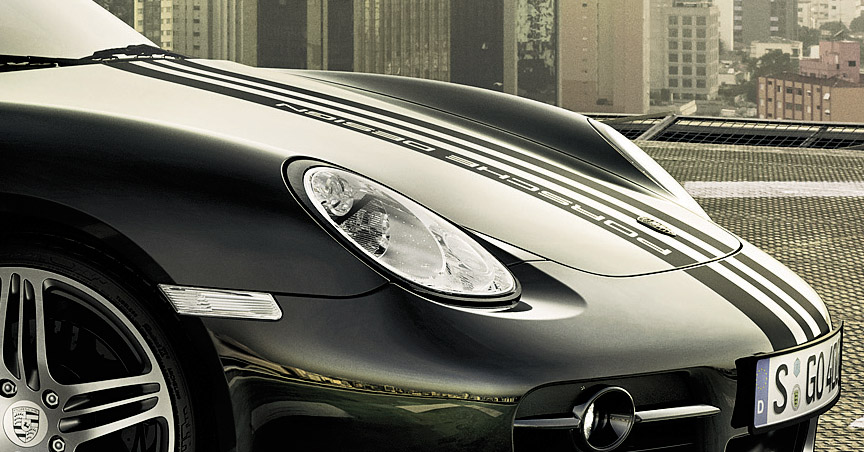

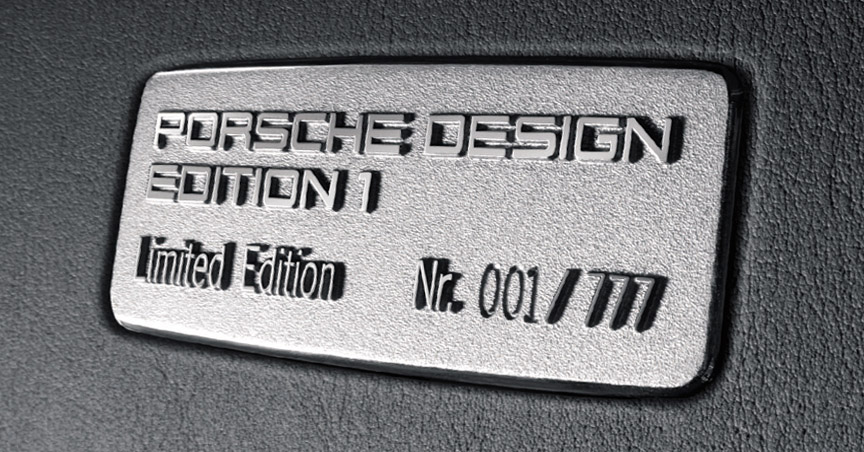
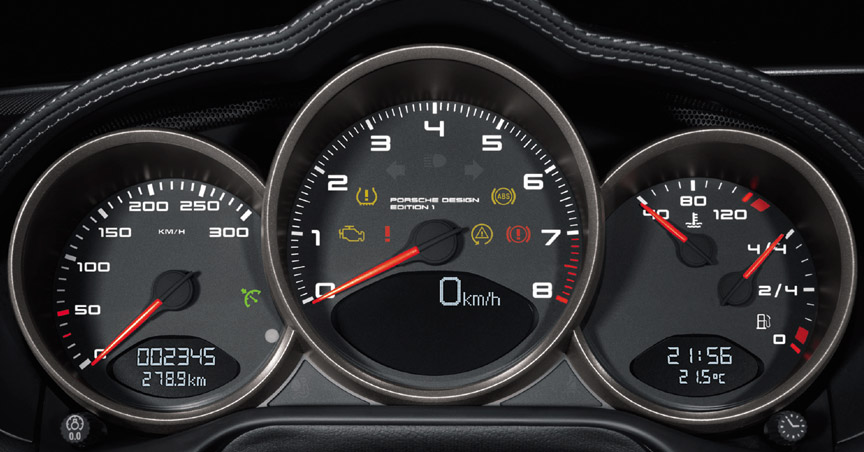
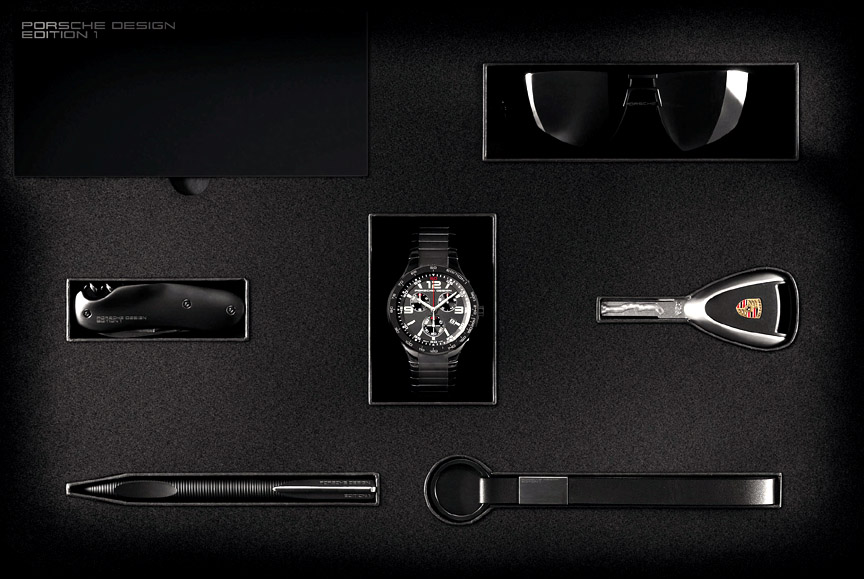
Cayman S Sport
The last original Caymans made before the 2009 facelift version, were Cayman S Sport in September 2008. They were uniquely available also in 911 GT3 RS colors Orange and Green in addition to Black, Indian Red, Speed Yellow, Carrara White and Arctic Silver Metallic. The cars came with sports exhaust system as standard and therefore the car had a little bit more power.
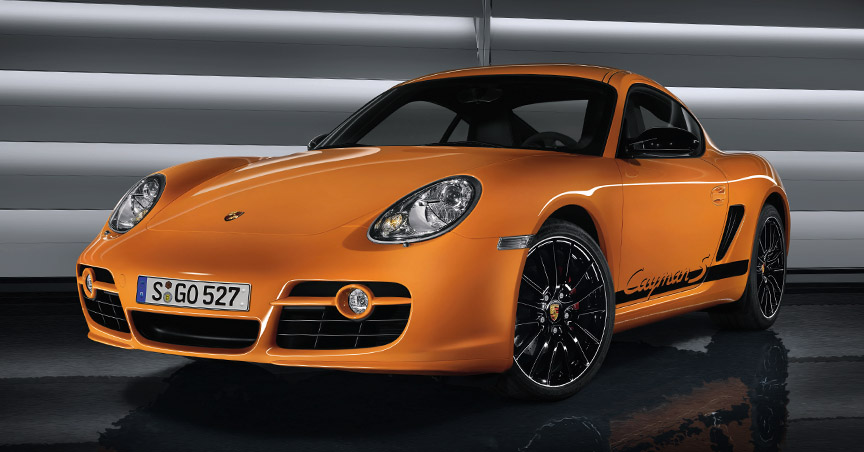


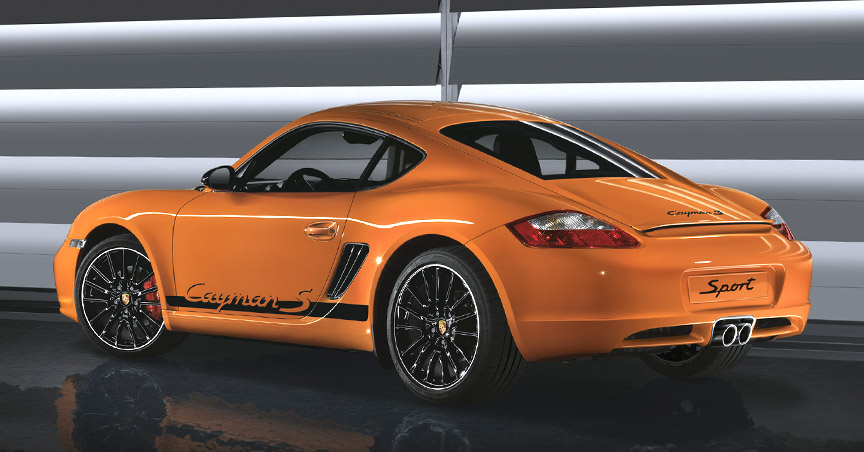

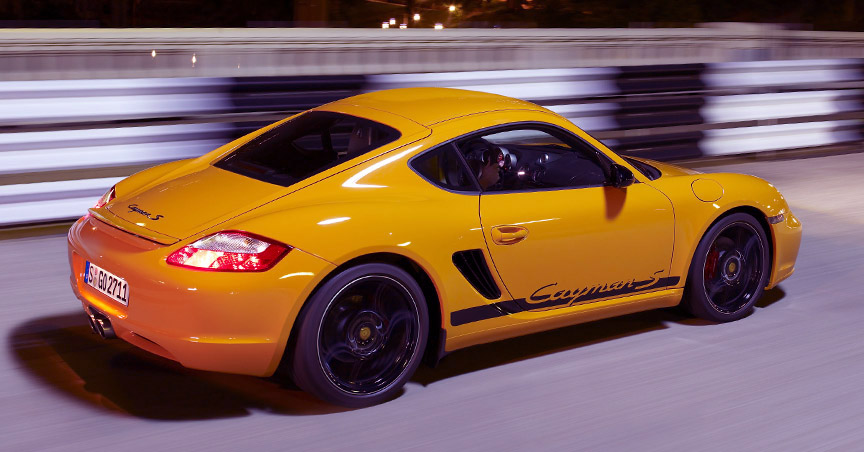
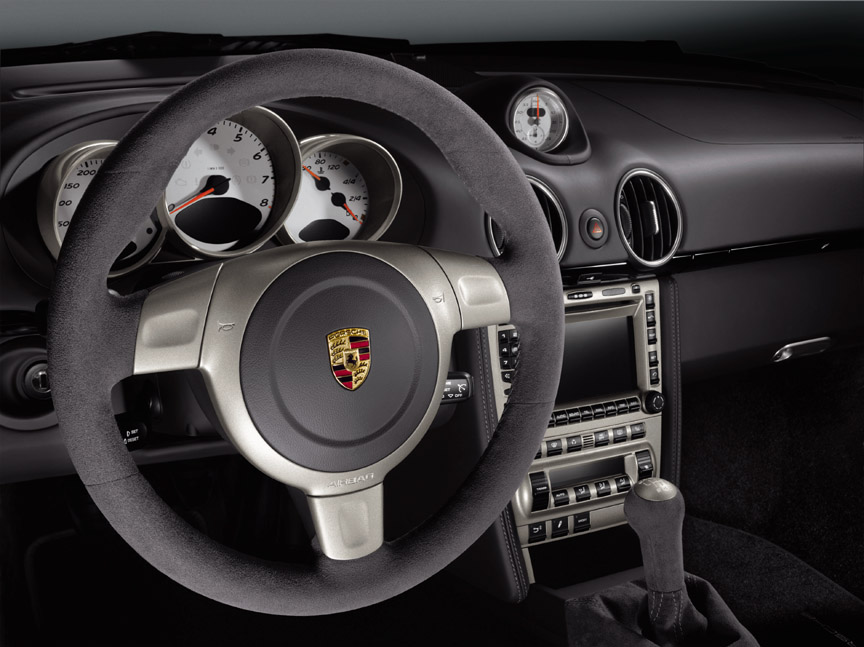
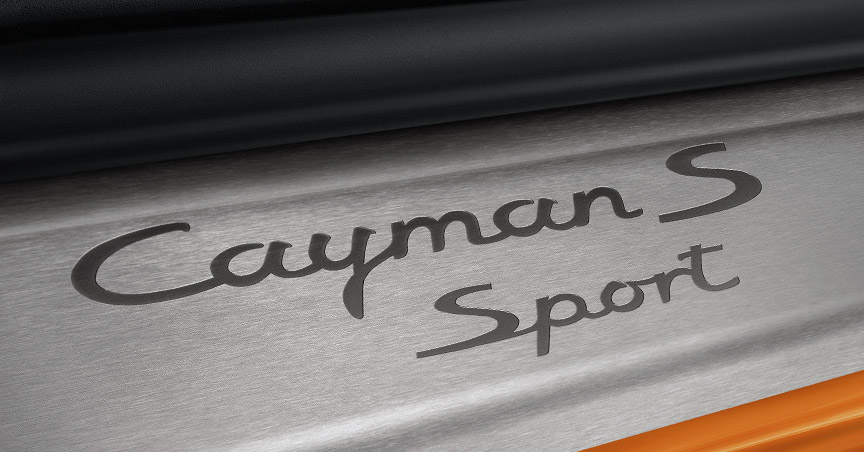
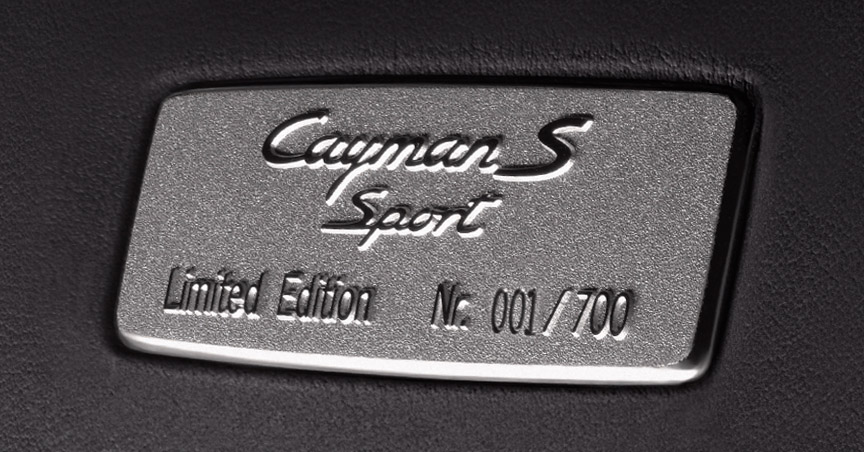
Cayman 987.2 (2009 – 2012)
Official photos: 2008 November 18 / Premiere: 2008 November 19, Los Angeles Auto Show / Market launch: 2009 February
Technical Specifications 987.2 Cayman
| Modification | Engine | Power | Torque | Gearbox | 100 km/h | 100 mph | 200 km/h | 1 km | Top speed | DIN weight |
|---|---|---|---|---|---|---|---|---|---|---|
| Cayman | 2.9B6 | 195 kW | 221 lb-ft / 300 Nm | manual 6-speed | 5.8 sec. | 13.4 sec. | 22.0 sec. | 25.4 sec. | 165 mph / 265 km/h | 1330 kg / 2932 lb |
| Cayman | 2.9B6 | 195 kW | 221 lb-ft / 300 Nm | PDK 7-speed | *5.5/5.7 sec. | *12.9/13.2 sec. | * /21.8 sec. | * /25.2 sec. | 163 mph / 263 km/h | 1360 kg / 2998 lb |
| Cayman S | 3.4B6 | 235 kW | 272 lb-ft / 370 Nm | manual 6-speed | 5.2 sec. | 11.4 sec. | 18.1 sec. | 24.1 sec. | 172 mph / 277 km/h | 1350 kg / 2976 lb |
| Cayman S | 3.4B6 | 235 kW | 272 lb-ft / 370 Nm | PDK 7-speed | *4.9/5.1 sec. | *10.9/11.2 sec. | * /17.9 sec. | * /23.9 sec. | 171 mph / 275 km/h | 1375 kg / 3031 lb |
| Cayman S Black Edition | 3.4B6 | 243 kW | 272 lb-ft / 370 Nm | manual 6-speed | 5.1 sec. | 173 mph / 279 km/h | ||||
| Cayman S Black Edition | 3.4B6 | 243 kW | 272 lb-ft / 370 Nm | PDK 7-speed | *4.8/5.0 sec. | 172 mph / 277 km/h | ||||
| Cayman R | 3.4B6 | 243 kW | 272 lb-ft / 370 Nm | manual 6-speed | 5.0 sec. | 10.7 sec. | 17.2 sec. | 175 mph / 282 km/h | 1295 kg / 2855 lb | |
| Cayman R | 3.4B6 | 243 kW | 272 lb-ft / 370 Nm | PDK 7-speed | *4.7/4.9 sec. | *10.2/10.5 sec. | *16.7/17.0 sec. | 174 mph / 280 km/h | 1320 kg / 2910 lb |
From the 987.2 generation, the manual gearbox has a self-adjusting X-Tend clutch registering the gradual decrease in clutch pad thickness and, by turning an adjustment ring, setting off and compensating the gap caused by clutch pad wear. The advantage is that it reduces the increase in foot pressure required in the course of time until reaching the wear limit.
PDK double-clutch gearbox
The biggest news with the facelifted version of the original Cayman came for the drivers preferring automatic gear change. The more comfortable, but not so sporty Tiptronic was replaced with the 7-speed PDK (Porsche-Doppelkupplungsgetriebe). The PDK is made up of two transmission units connected via separate clutches with the drivetrain. One transmission unit comes with gears 1, 3, 5, 7 and reverse, the other operates gears 2, 4 and 6. The PDK is not so comfortable in the city as the Tiptronic used to be, but it is super fast at the race track when used in Sport Plus mode that comes with the Sport Chrono package. Regarding the acceleration times with the PDK, it should be mentioned that in real life a manual transmission car is faster from traffic lights, because you have to set up the launch with the automatic. The official acceleration numbers are better for the PDK, but these numbers are measured from the moment the car starts to move. While changing one gear at the time is eye blink fast with the PDK as what happens is a clutch change, not a gear change. It is not the case when you need to change 2 gears down, for example when taking over. Changing two gears sequentially is slow with PDK because these gears are on the same shaft.
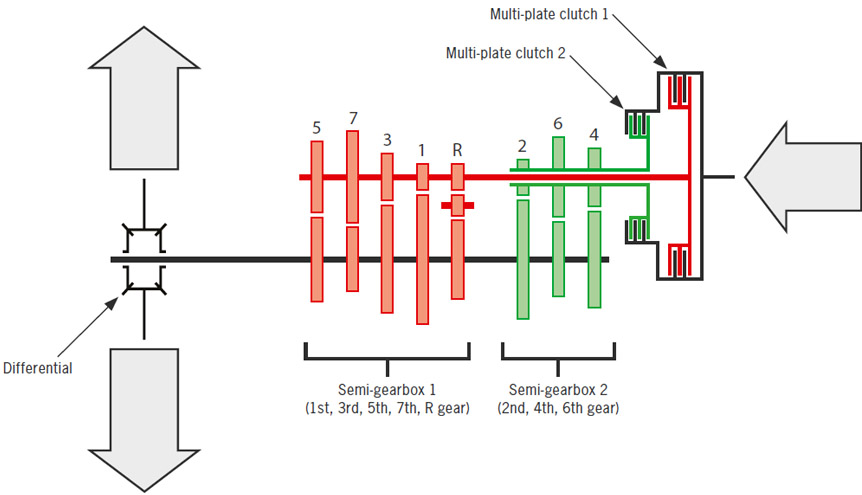
The PDK was part of the solution to reduce CO2 emissions. And as such, the car is programmed to use very low rpm – which makes the car a dog at city speeds. You cannot make it better with pressing the Sport-button either as in this case the revs are too high for permanent use. The PDK would be perfect if you could adjust the car in a way that the engine revolutions would never drop below 2000 rpm.
DFI Direct Fuel Injection
The second technical feature to support the lowering of the CO2 emissions were the new engines with the direct fuel injection system. The fuel was now injected directly into the cylinder instead of the inlet port. The base engine grew from 2.7 to 2.9 litres.
Brake system
The 987.2 generation came with the new braking system that shortens stopping distance in an emergency situation. Whenever the driver lets go of the gas pedal very quickly, the hydraulic control unit builds up pressure on the brakes and moves the pads slightly towards the discs before the driver even presses the brake pedal. The cars also came as standard with a new feature called Start-Off Assistant. Without the need to use the handbrake, the new system prevented the car from rolling forwards or backwards when setting off on a gradient by automatically holding the brakes in position and then letting go in a controlled process after the driver released the brake pedal. Both PDK and manual transmission cars were equipped with this system. In size, the brakes were similar to the 911 Carrera, now also on the base Cayman. Disc thicknesses vary.
| Color of callipers | Front disc diameter | Rear disc diameter | |
| Cayman | Black | 318 mm | 299 mm |
| Cayman S | Red | 318 mm | 299 mm |
| PCCB ceramic | Yellow | 350 mm | 350 mm |
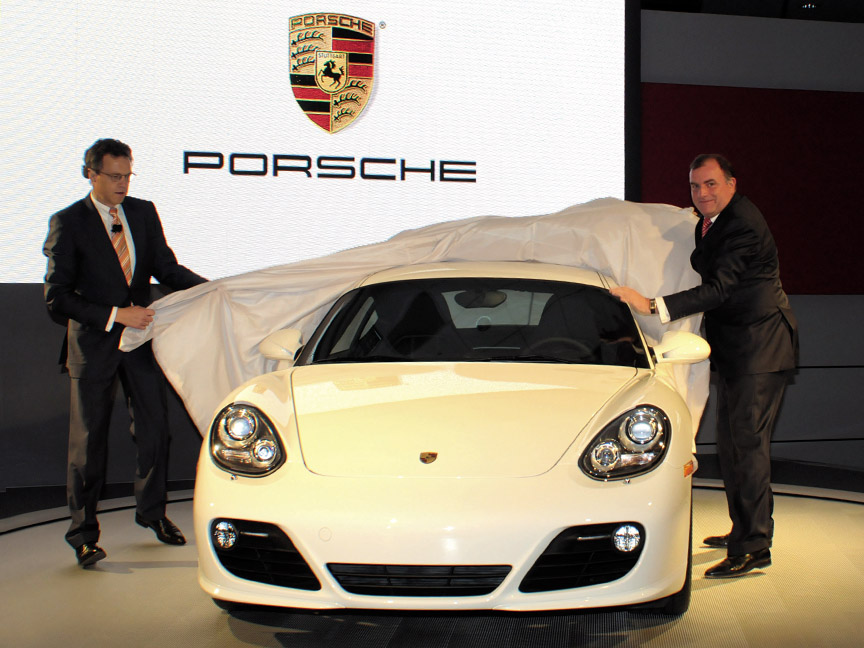
Awards in 2009
Best coupé under 50,000€ – by the readers of German magazine “sport auto”
Best Driver’s Car – by US car journal Motor Trend
Best Sports Car – by British car journal Auto Express
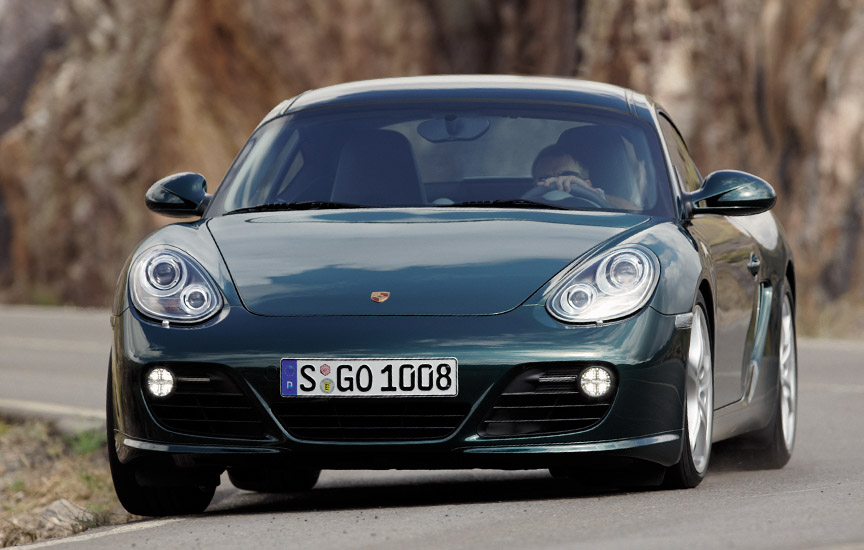
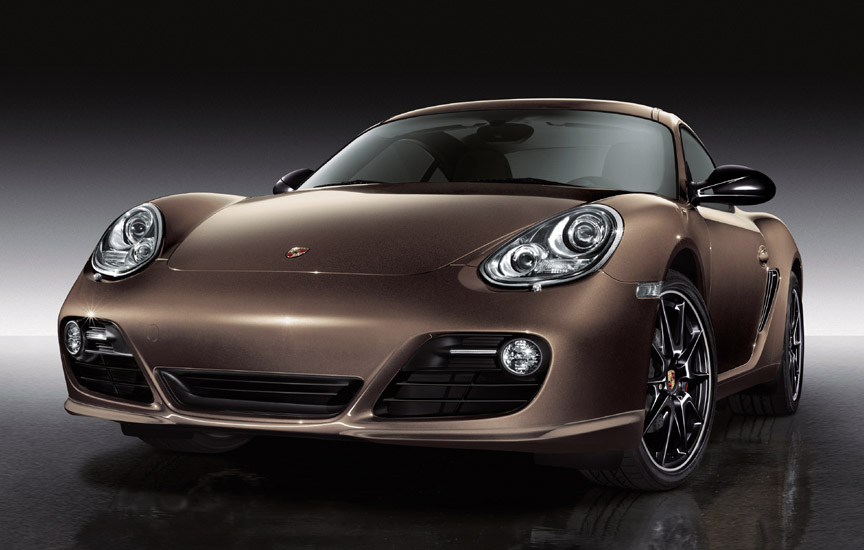
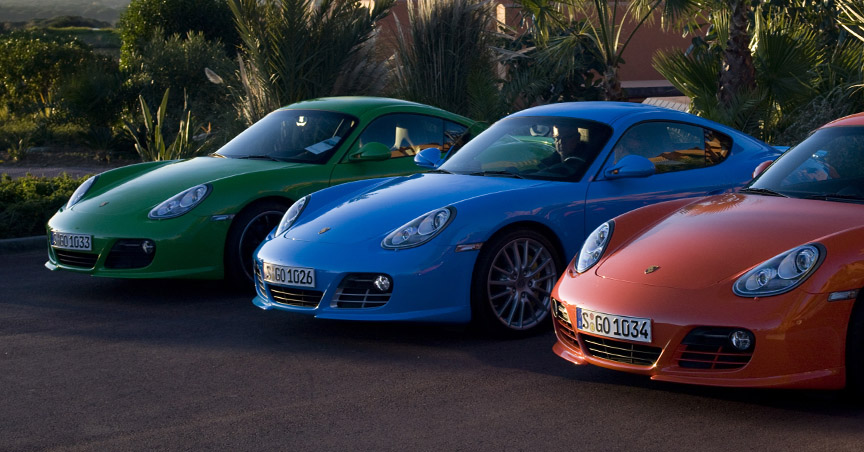
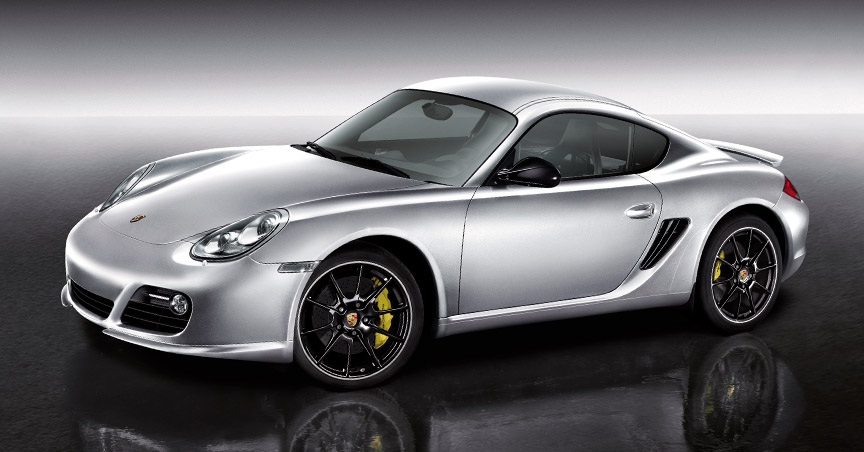
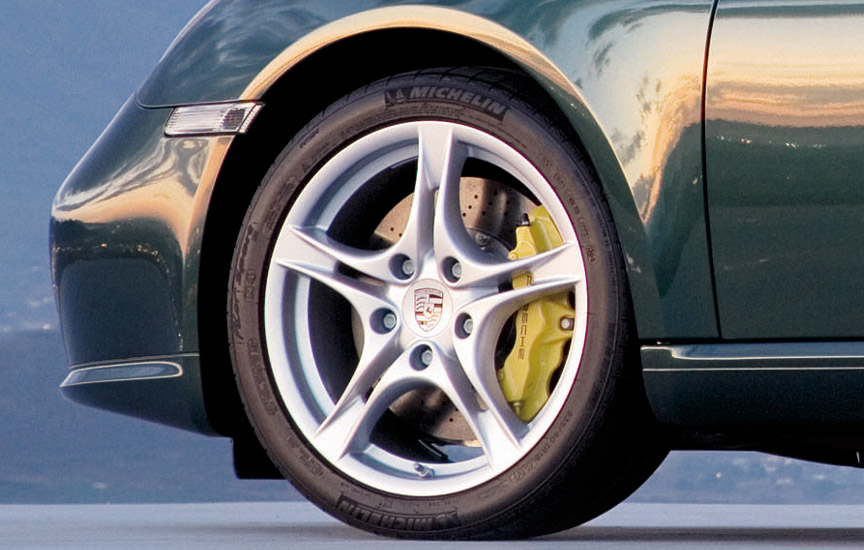

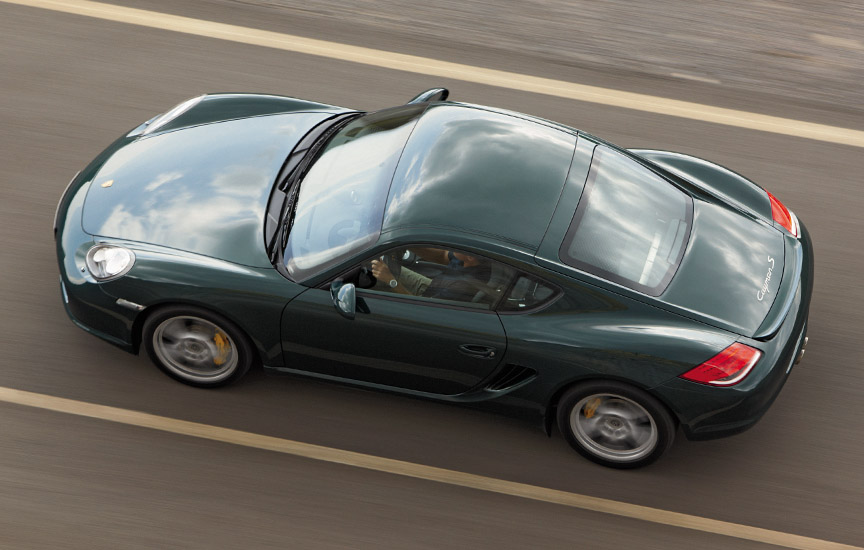
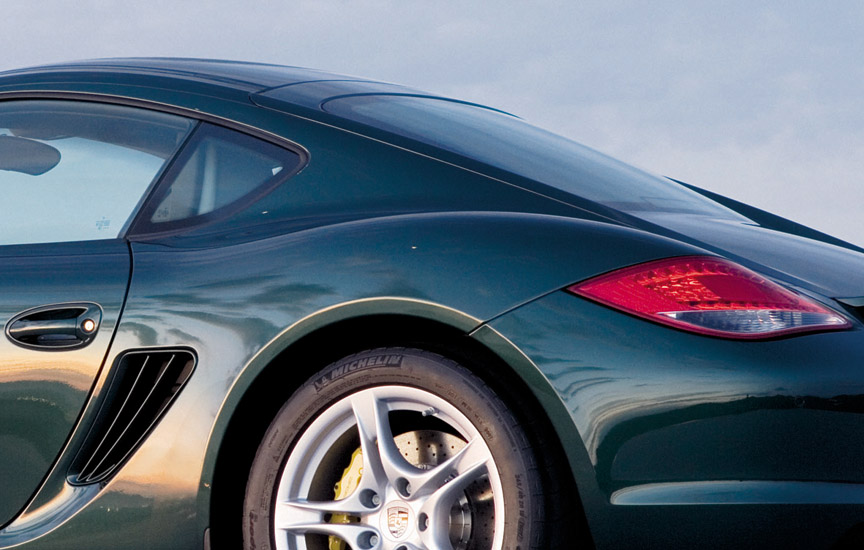
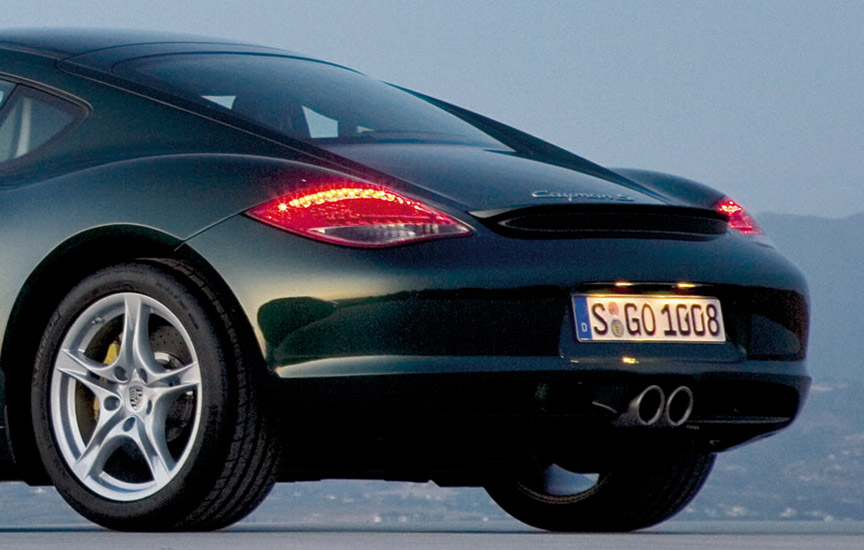
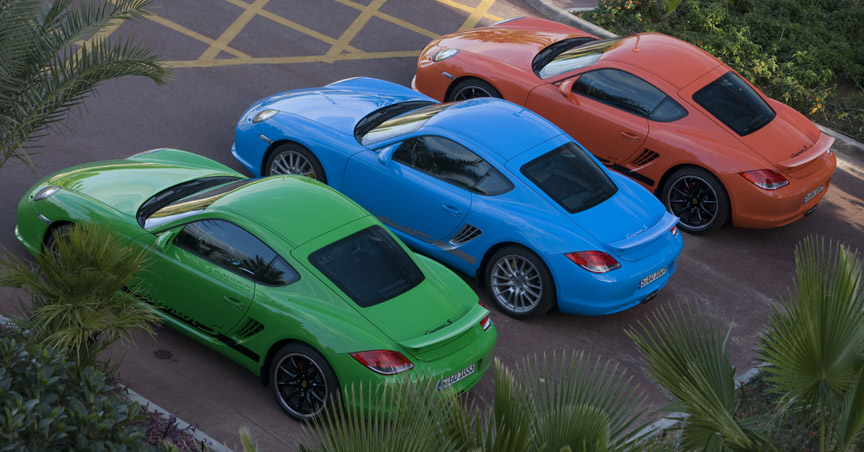
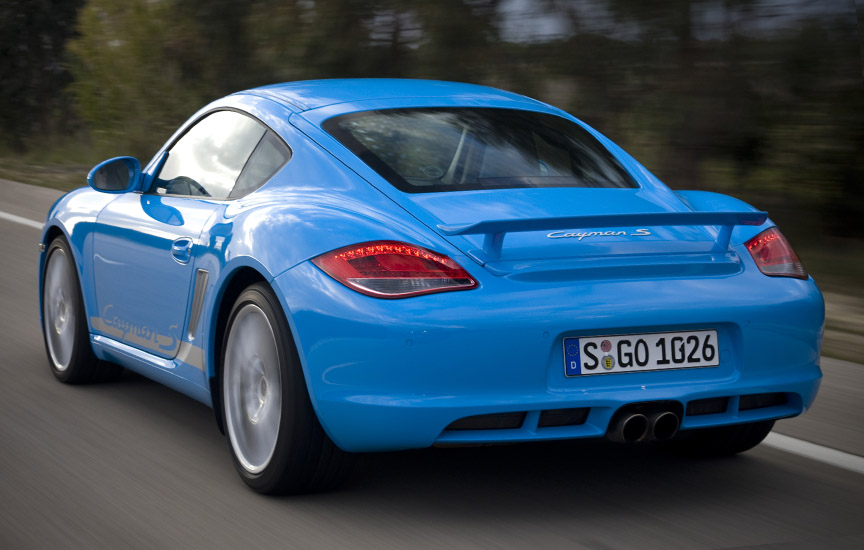
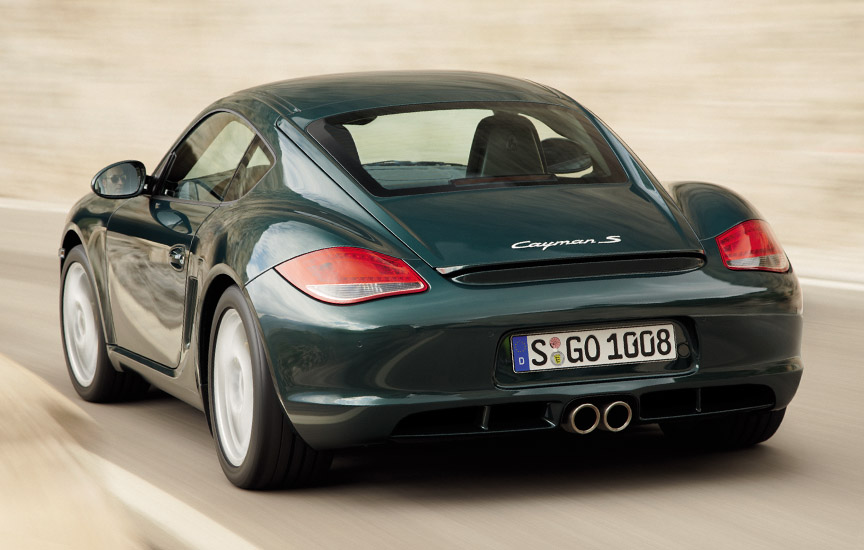
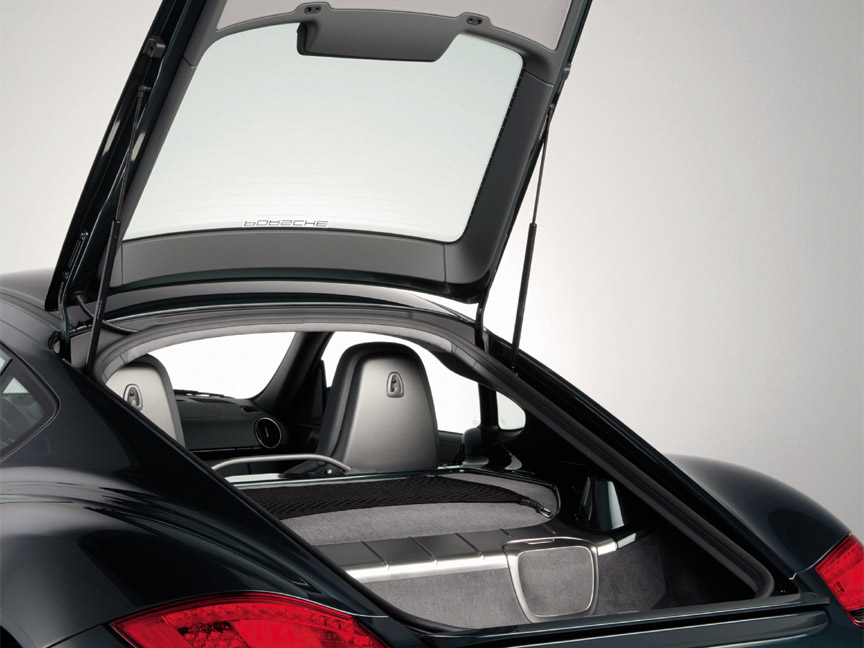
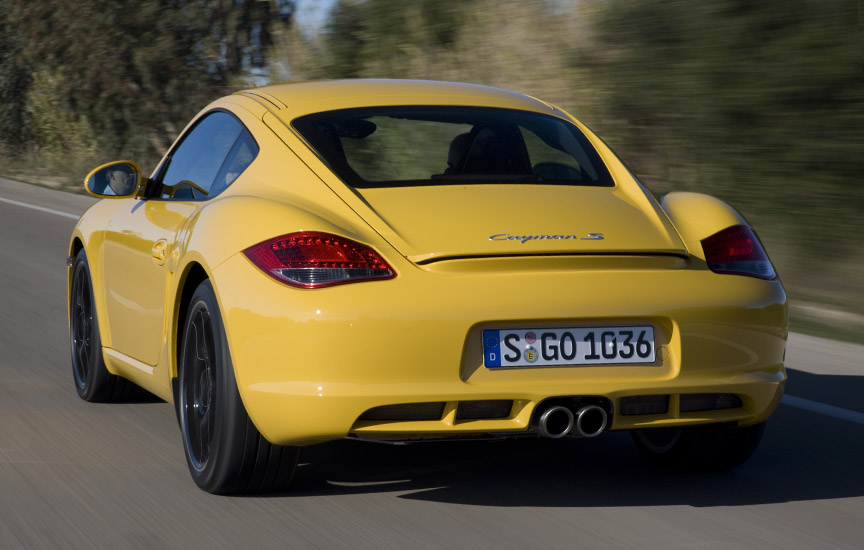
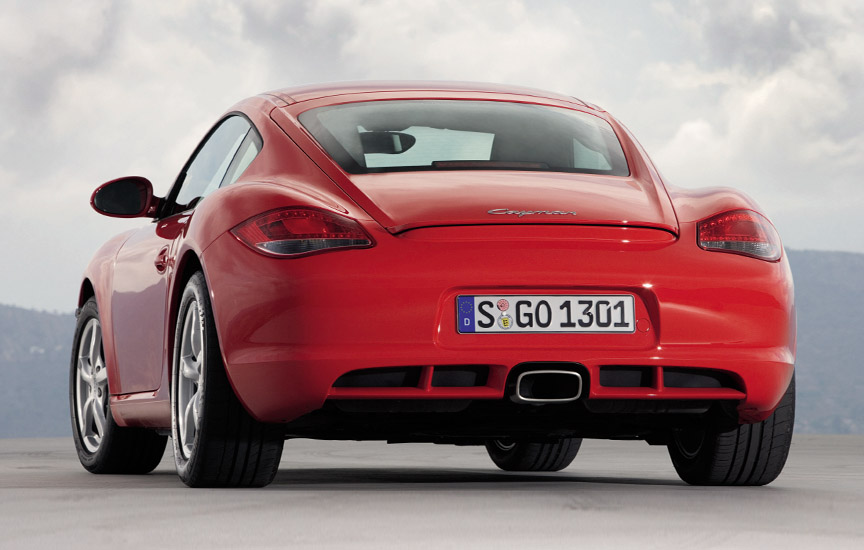
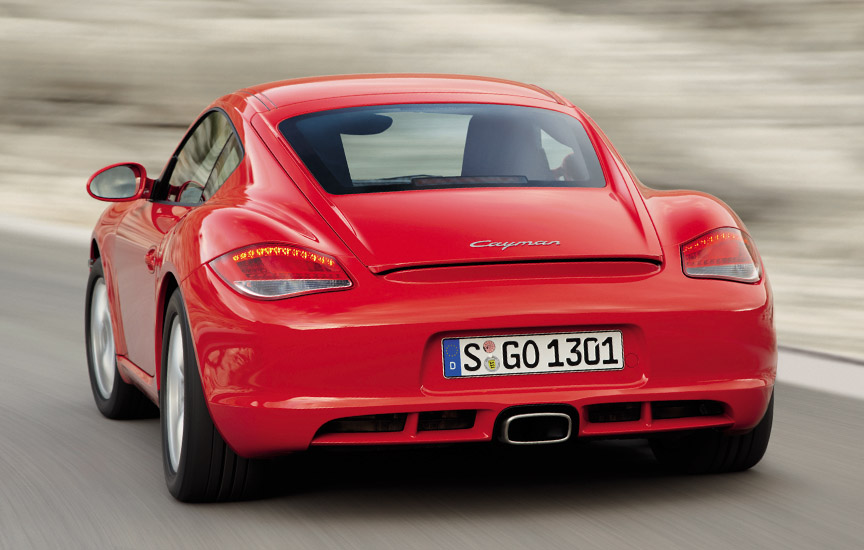
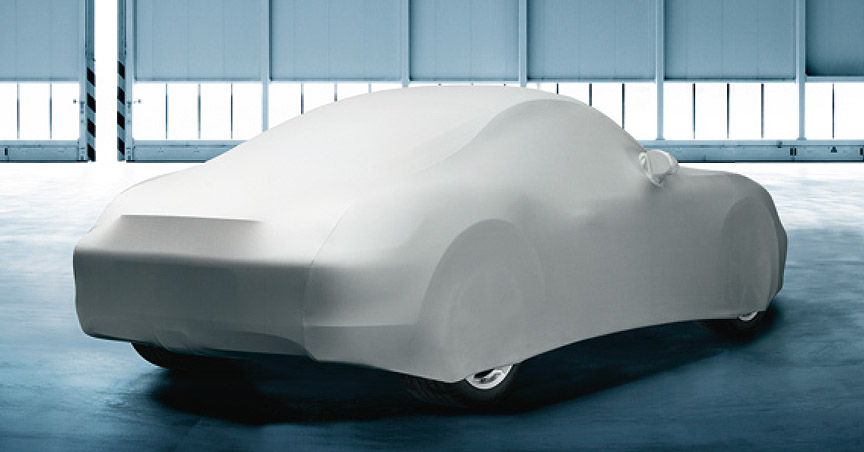
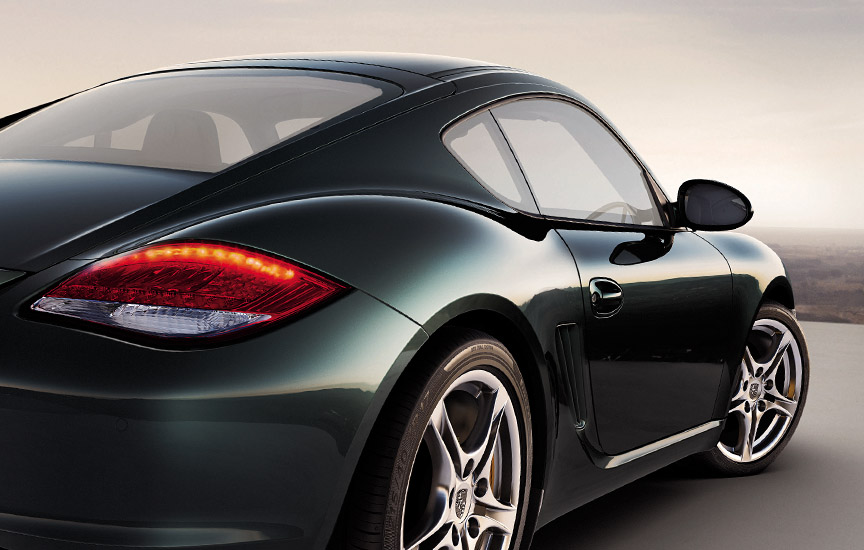
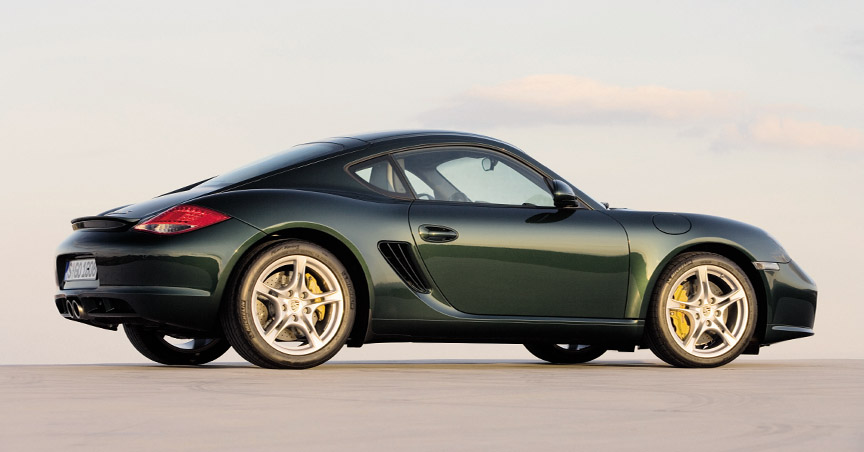
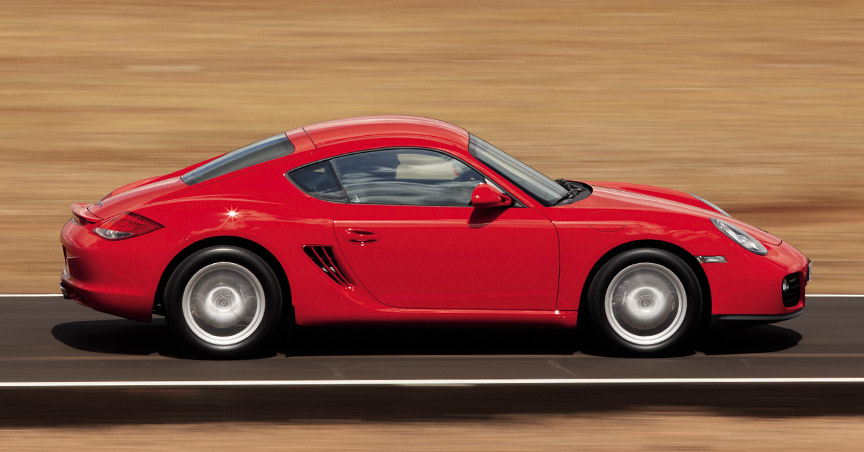

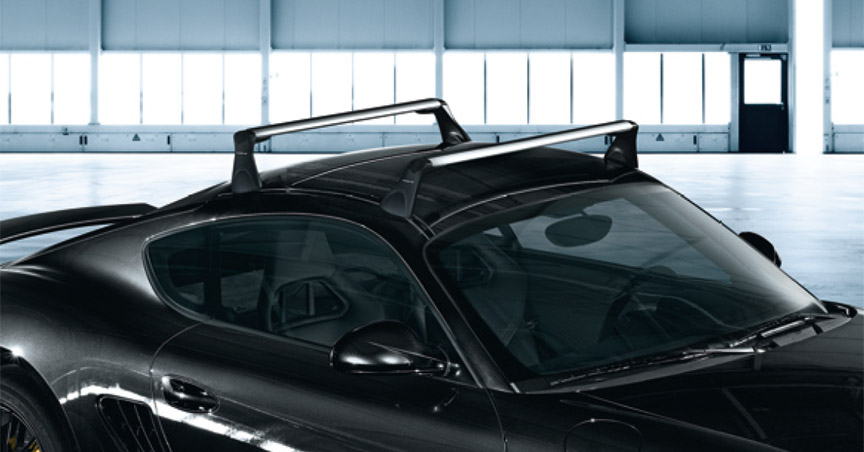

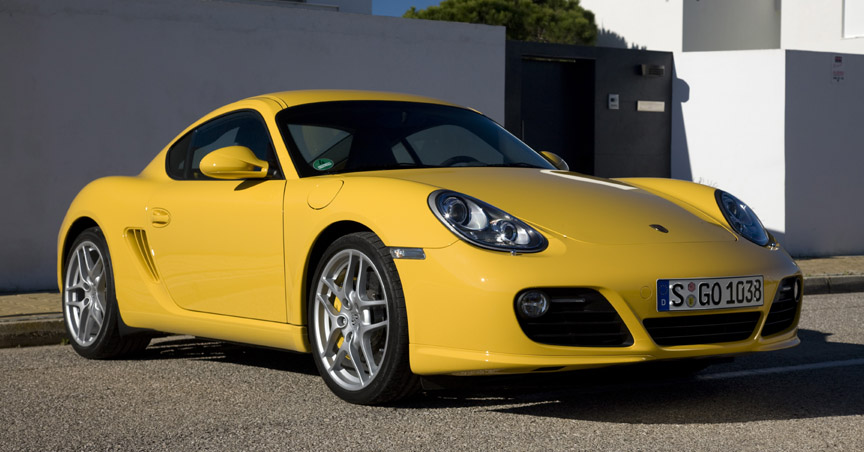
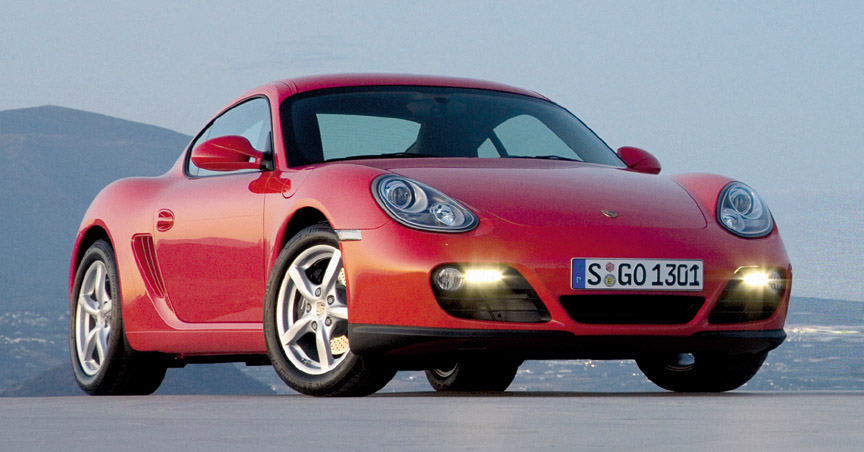
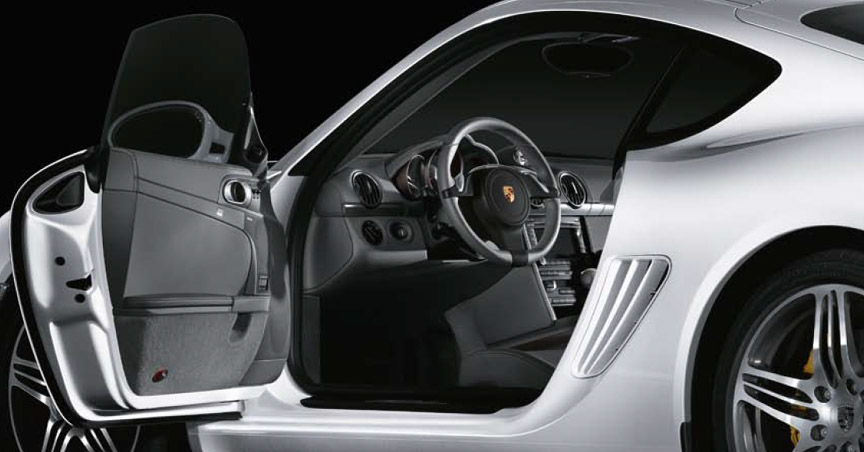
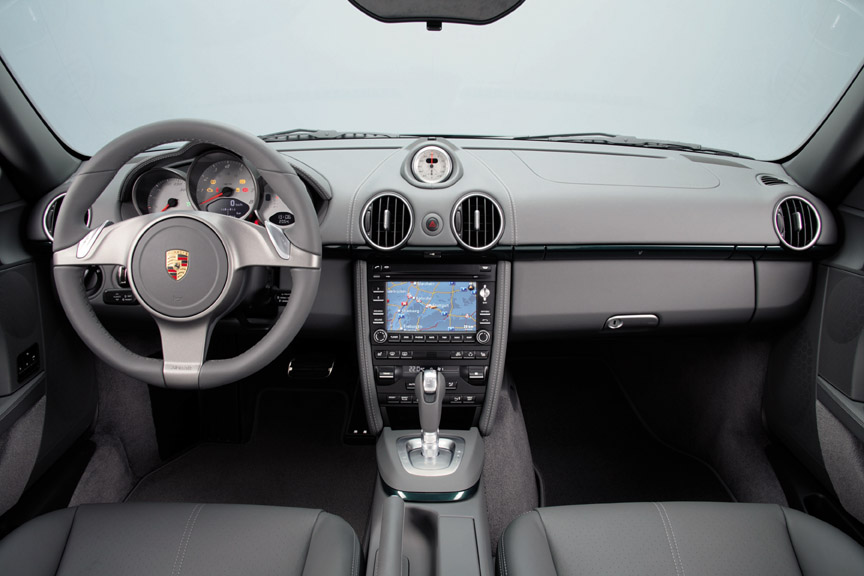

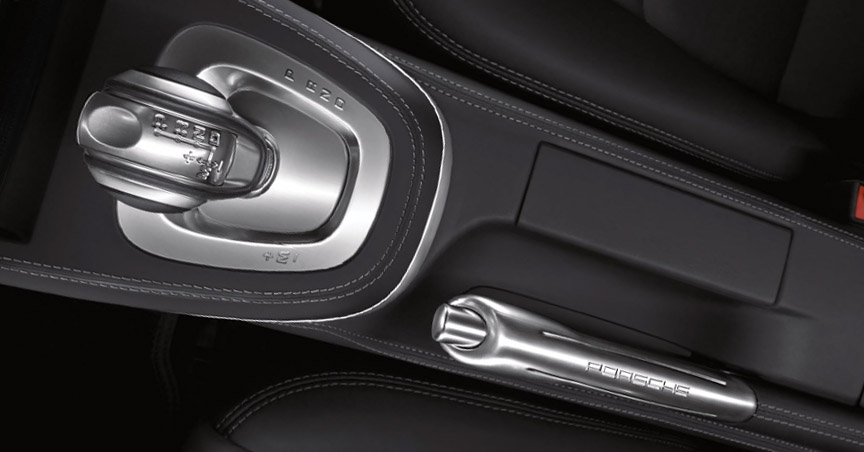
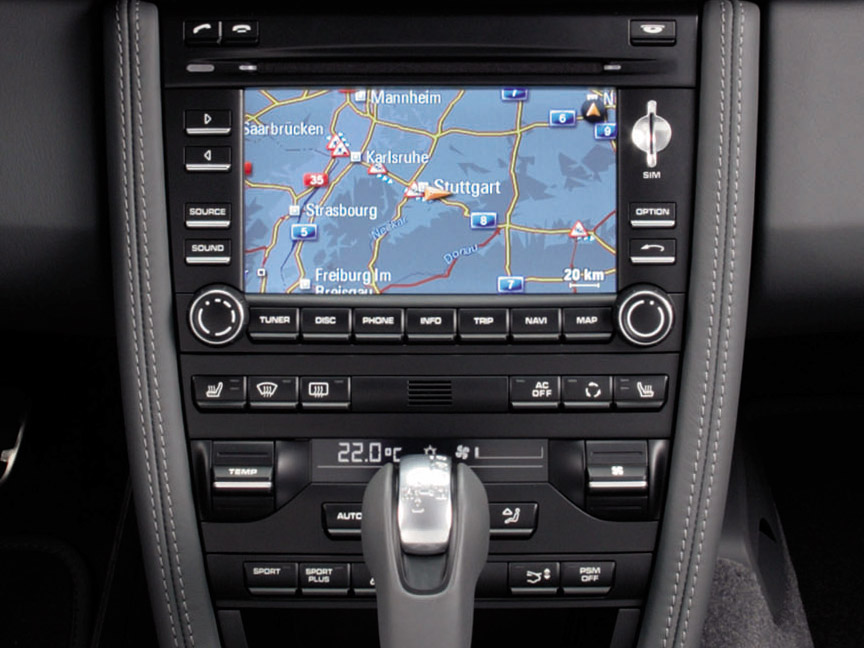
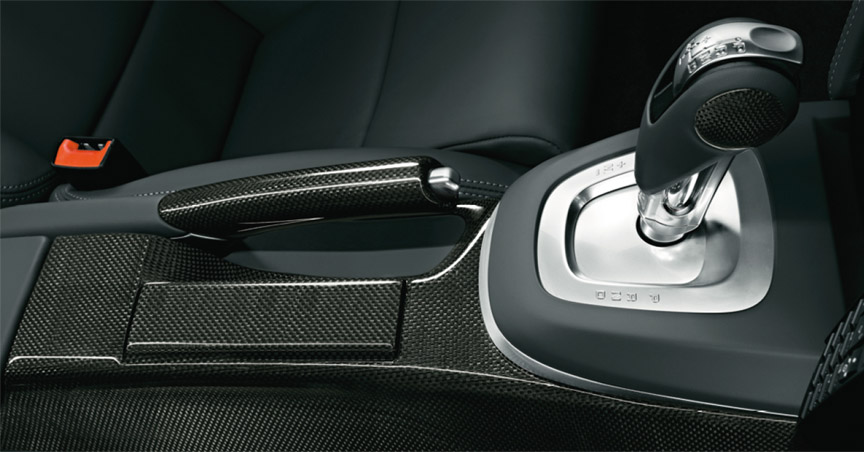

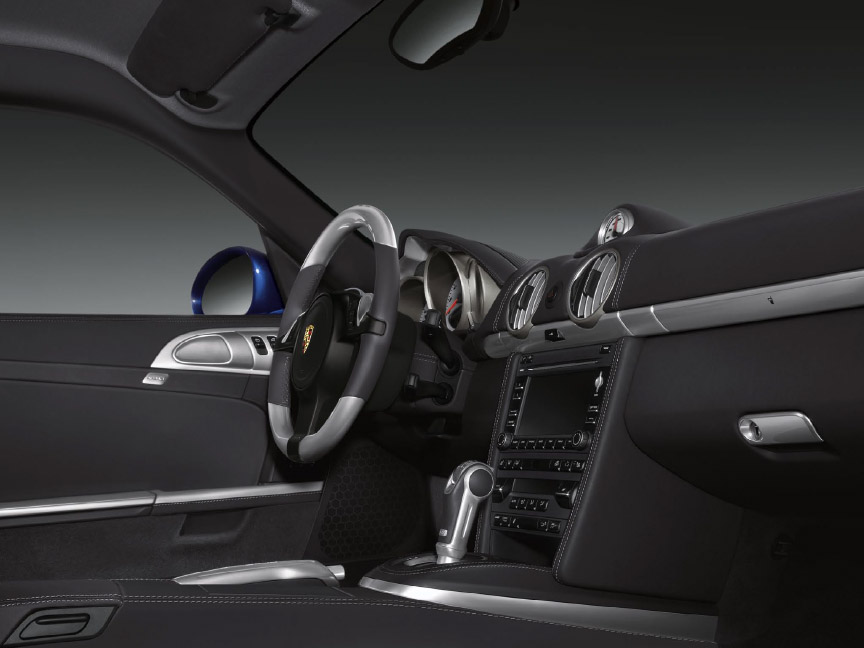
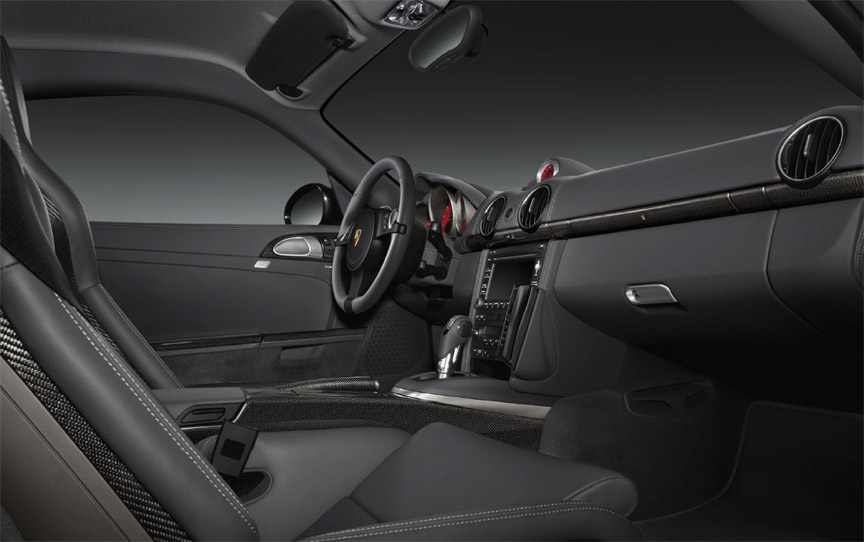
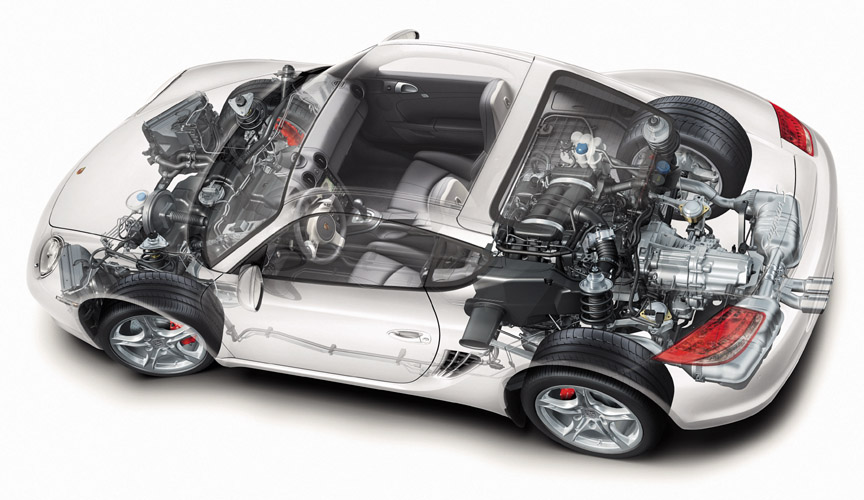


Cayman R
The racy Cayman R debuted at the Los Angeles Auto Show on November 17, 2010 and was available from February 2011. The R had a little bit more power, a differential lock and a specially adapted sports chassis, lowered by 0.8″/20 mm compared to the Cayman S. With the omission of air conditioning system (-12 kg/26 lb), sound system, radio and even cup holders plus exchanging the doors to aluminium units (-15 kg/33 lb) and equipping the car with bucket seats (-12 kg/26 lb), it was possible to reduce the weight by 55 kg/120 lb.
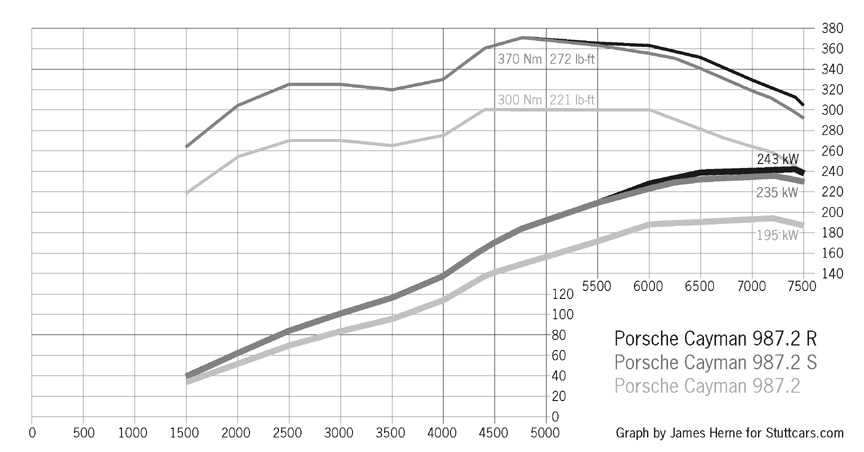
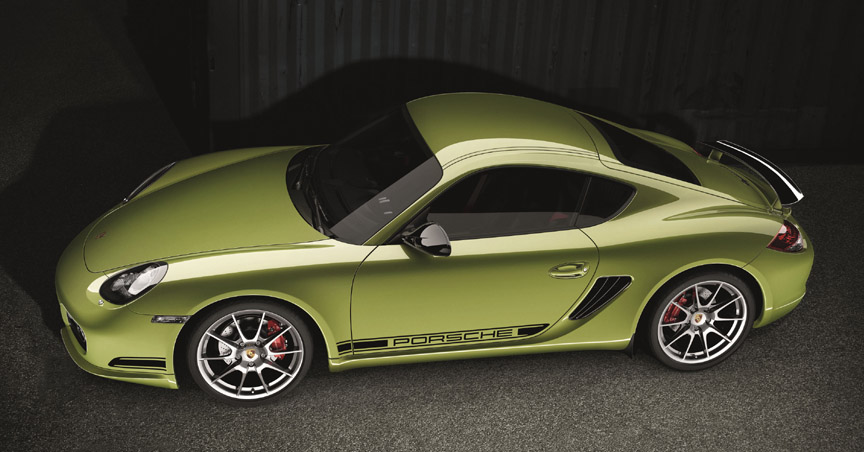
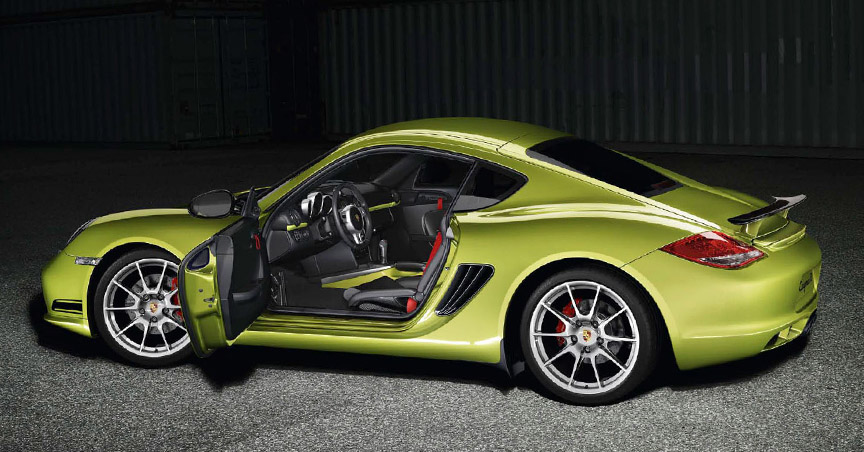
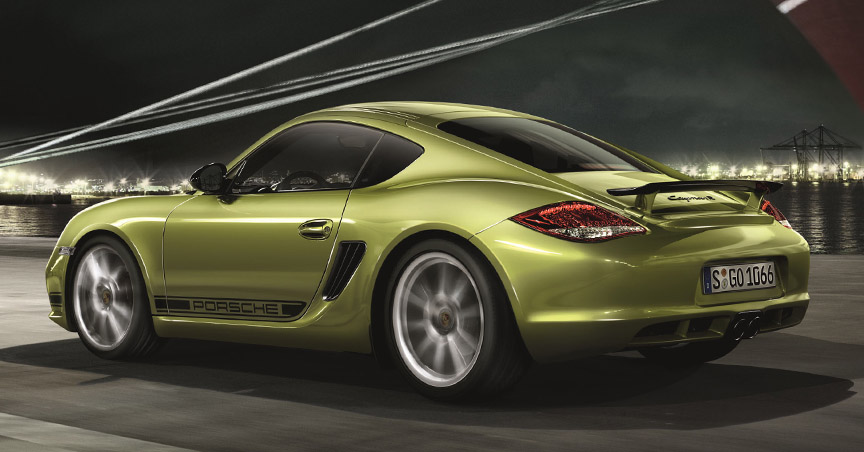
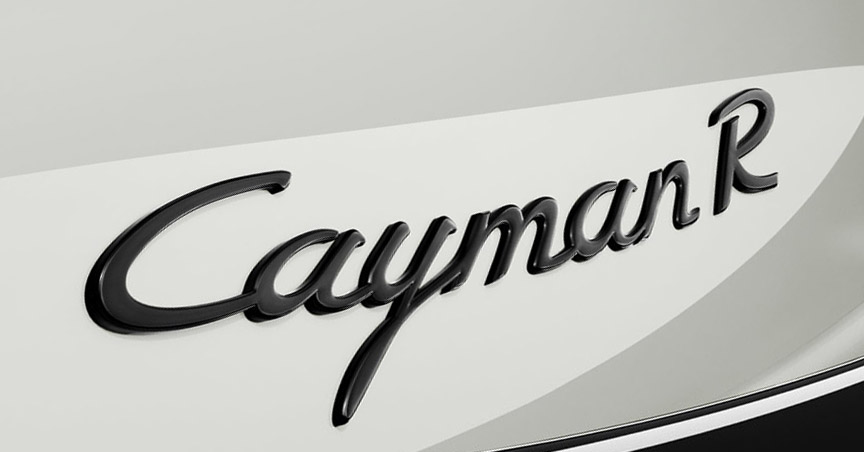
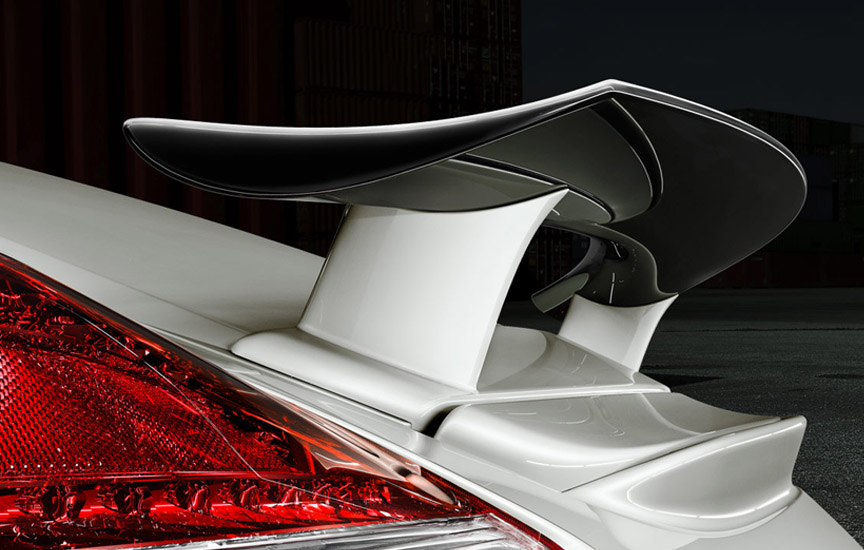

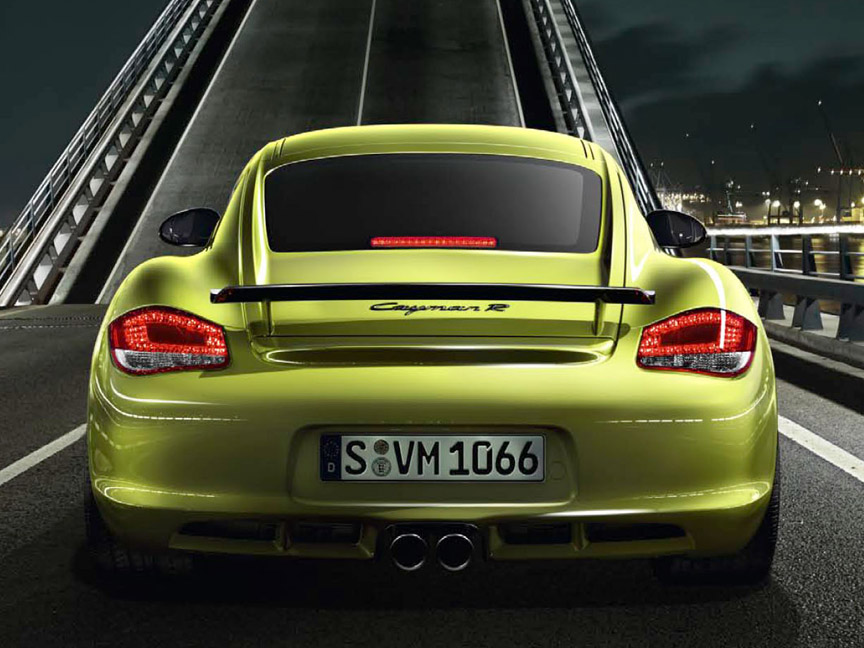
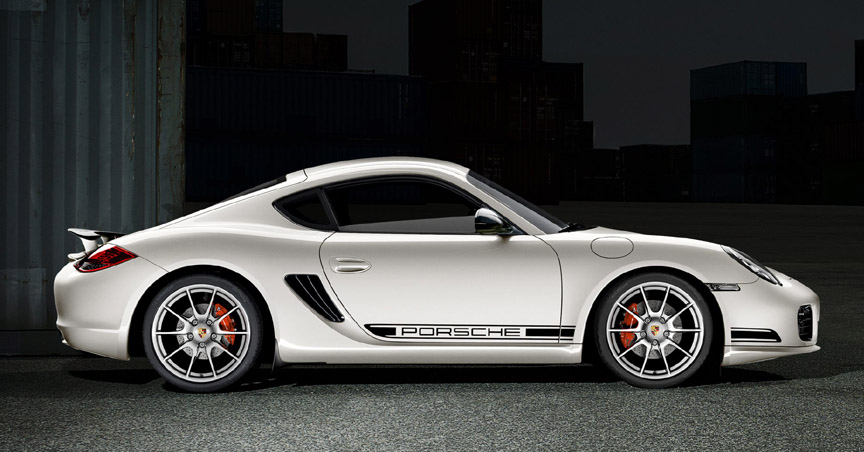
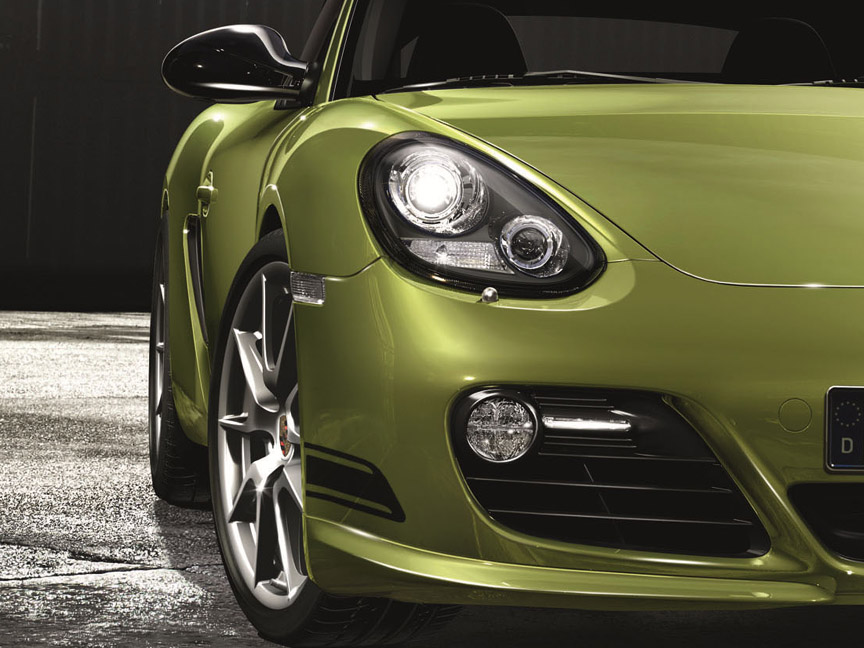
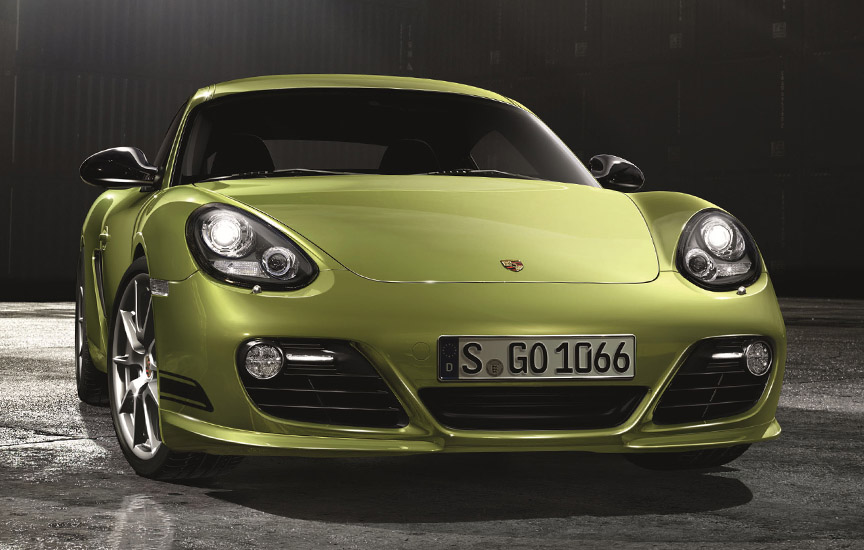
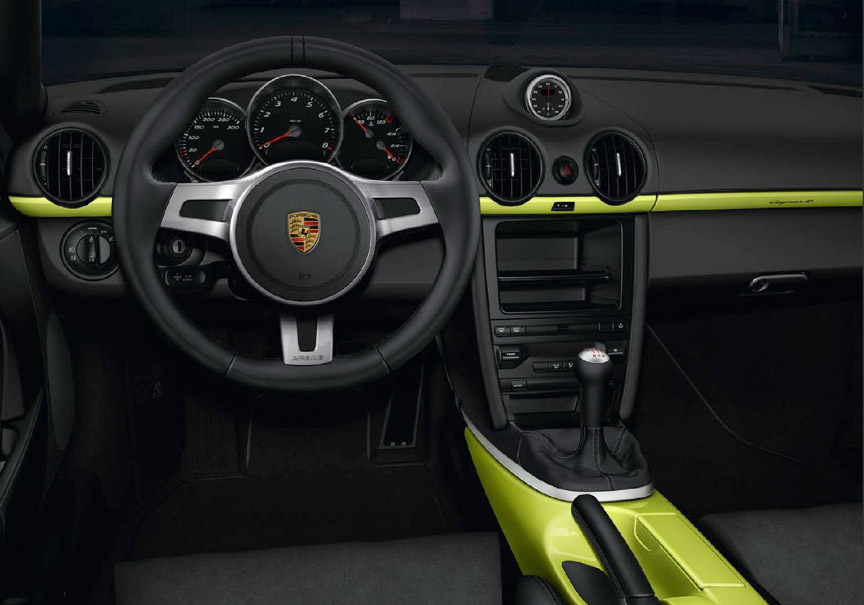
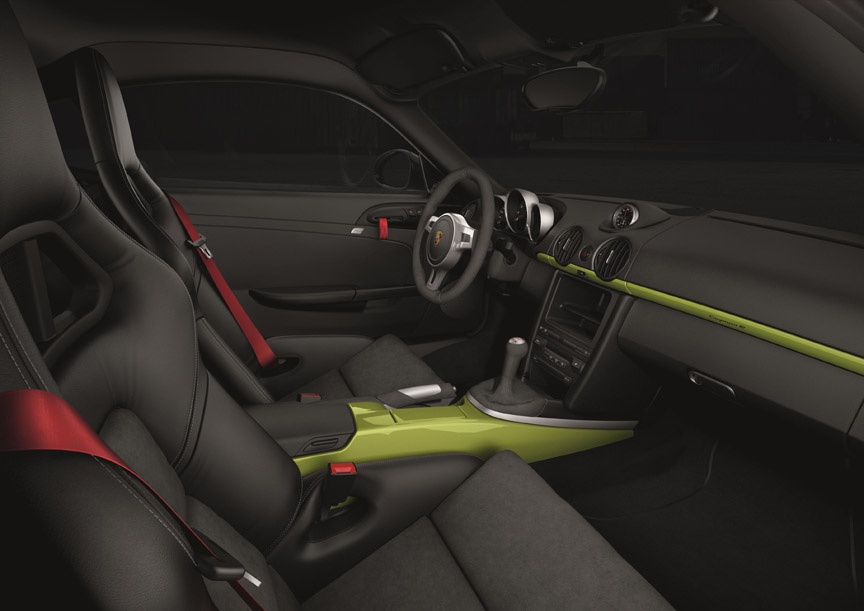
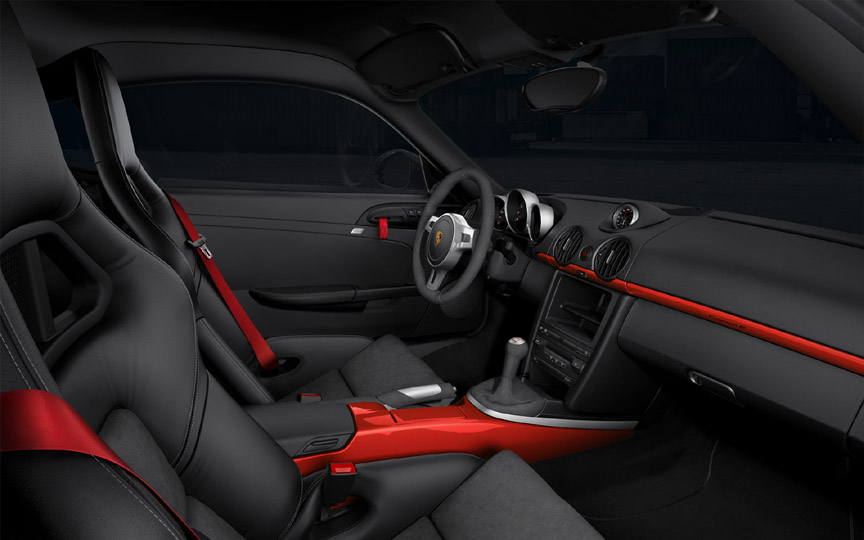
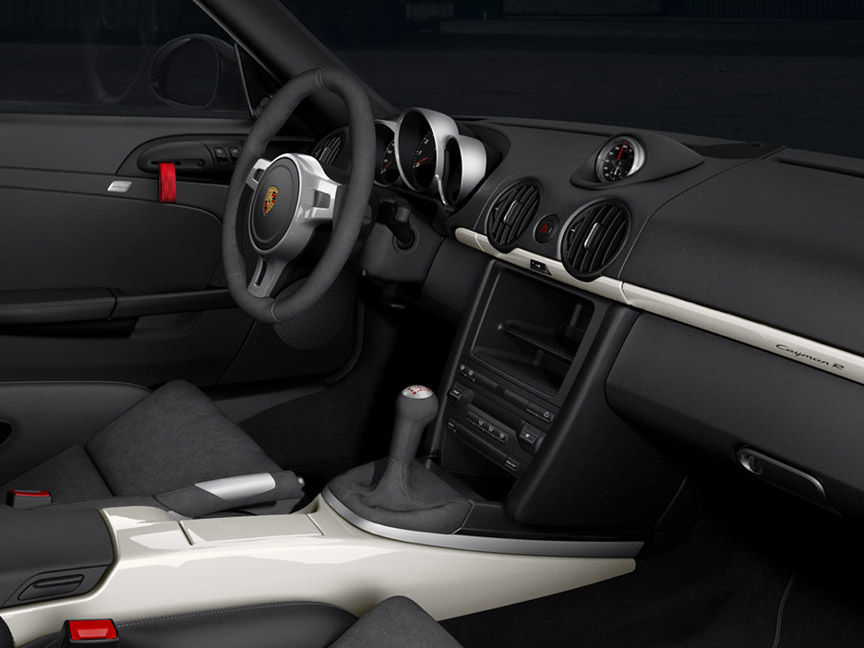
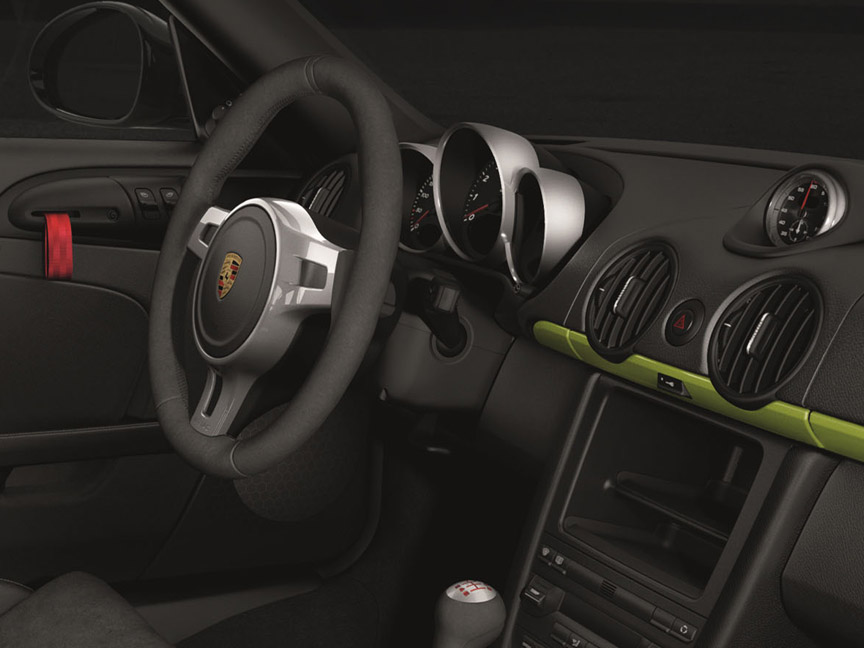
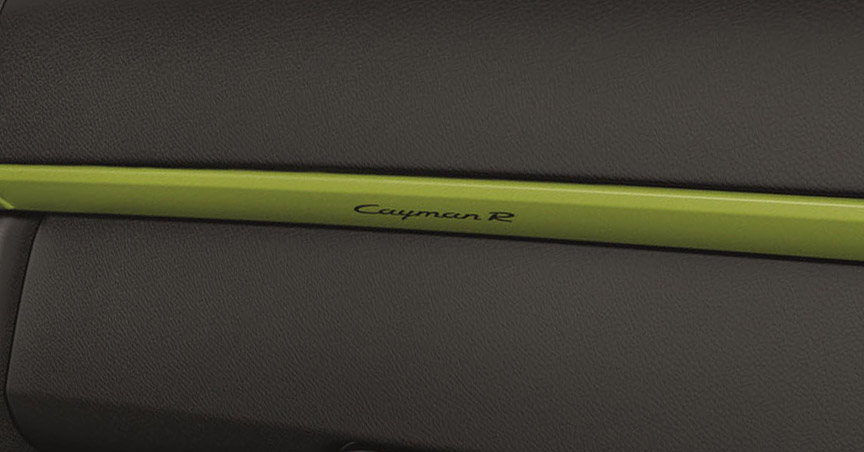
Cayman S Black Edition
To boost the sales of the outgoing 987.2 generation, the Cayman S Black Edition was launched in July 2011. As the name suggests, it was a cosmetic edition. The car featured the Comfort, Infotainment and Design packages with price reduction. The coupé had the same power as Cayman R and and the same 19″ lightweight wheels from Boxster Spyder. Black items included body, wheels, model name, exhaust pipe ends, interior, instrument dials, dashboard and gear lever/selector trim. The equipment included dynamic cornering lights, anti-dazzle mirrors, rain sensor, automatic climate control, Sport Design steering wheel, cruise control, sound system, navigation screen, universal audio interface, Bluetooth.

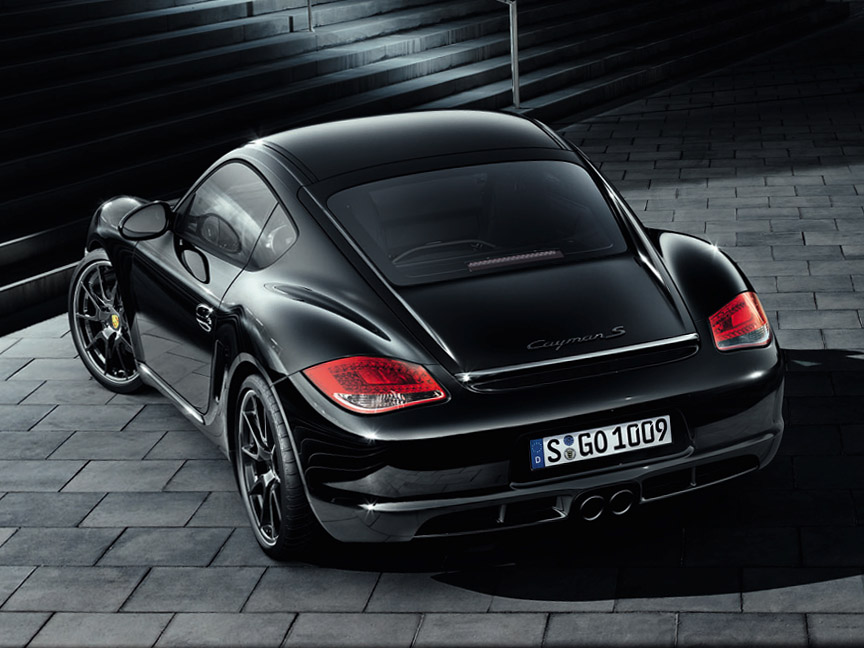
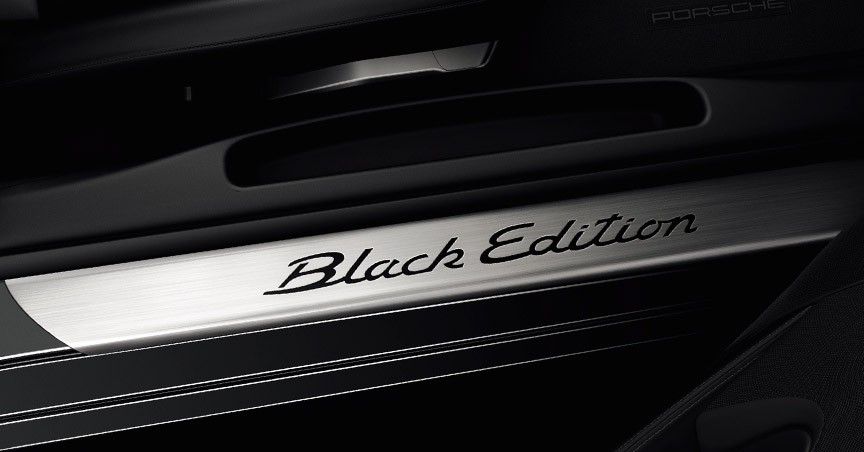
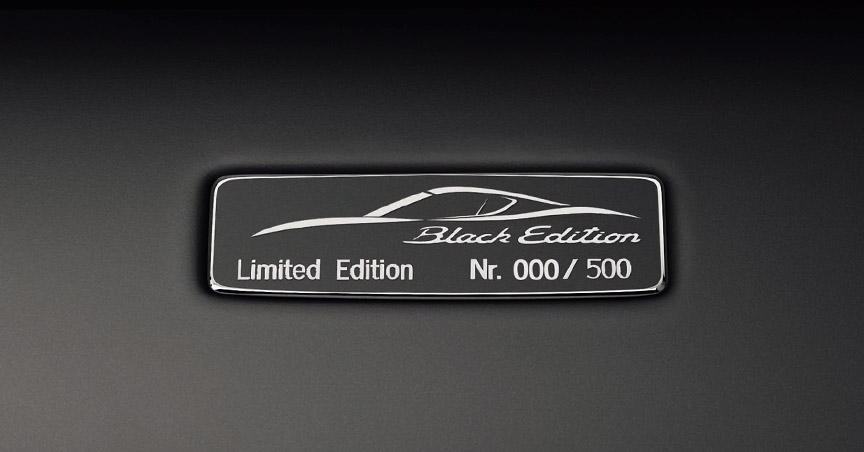
The 987.2 cars were launched during the worldwide recession and therefore the sales numbers were low. This was naturally bad news for Porsche, but good news for the 987.2 enthusiasts – these cars are relatively rare. Valmet produced 13.615 facelifted Caymans and with the 987.2 ended the Porsche production in Finland (1997-2011).


